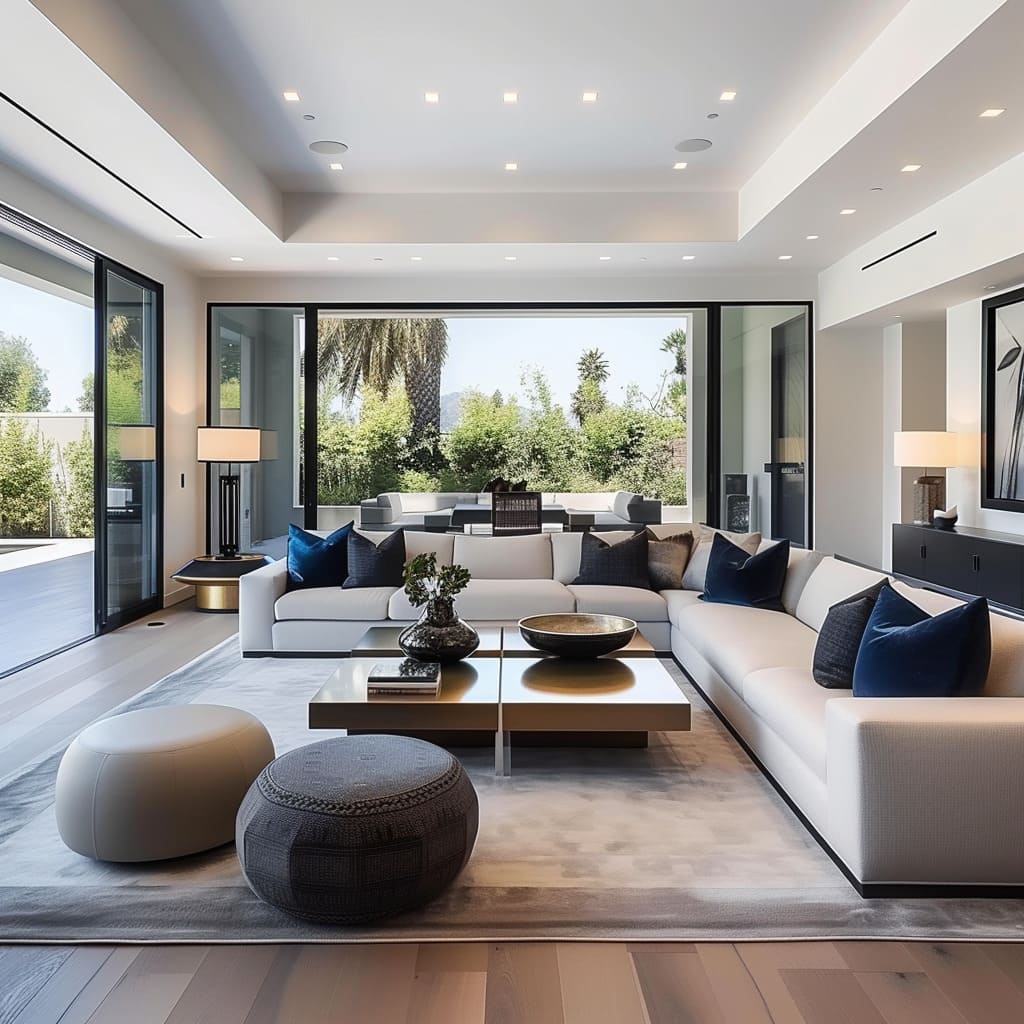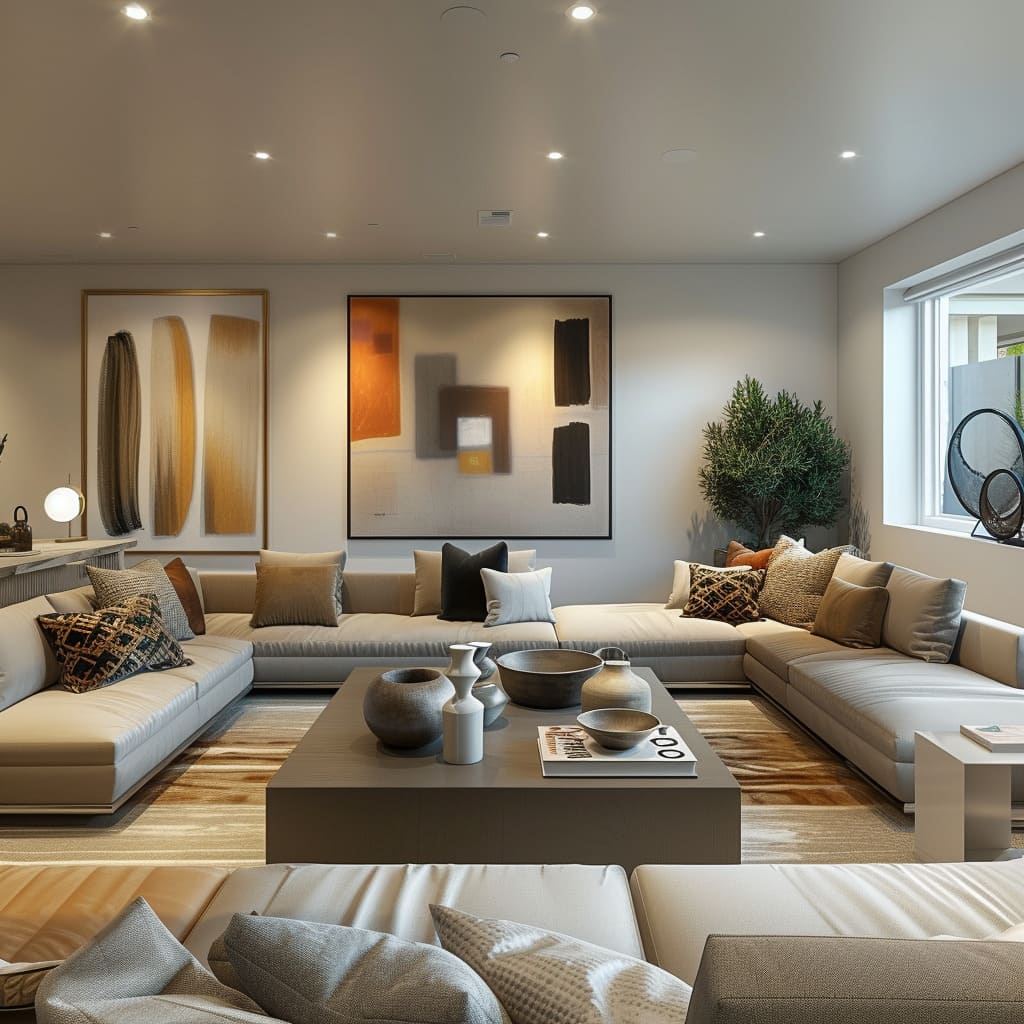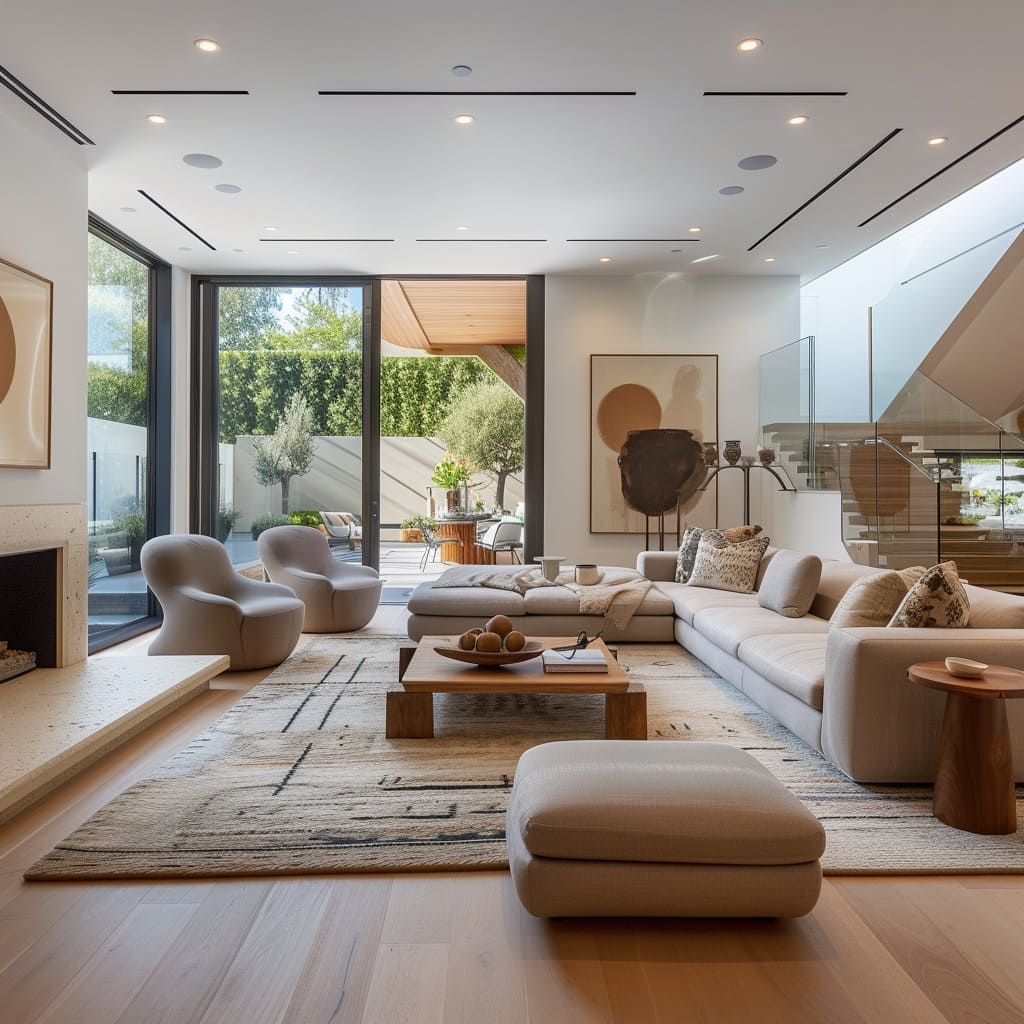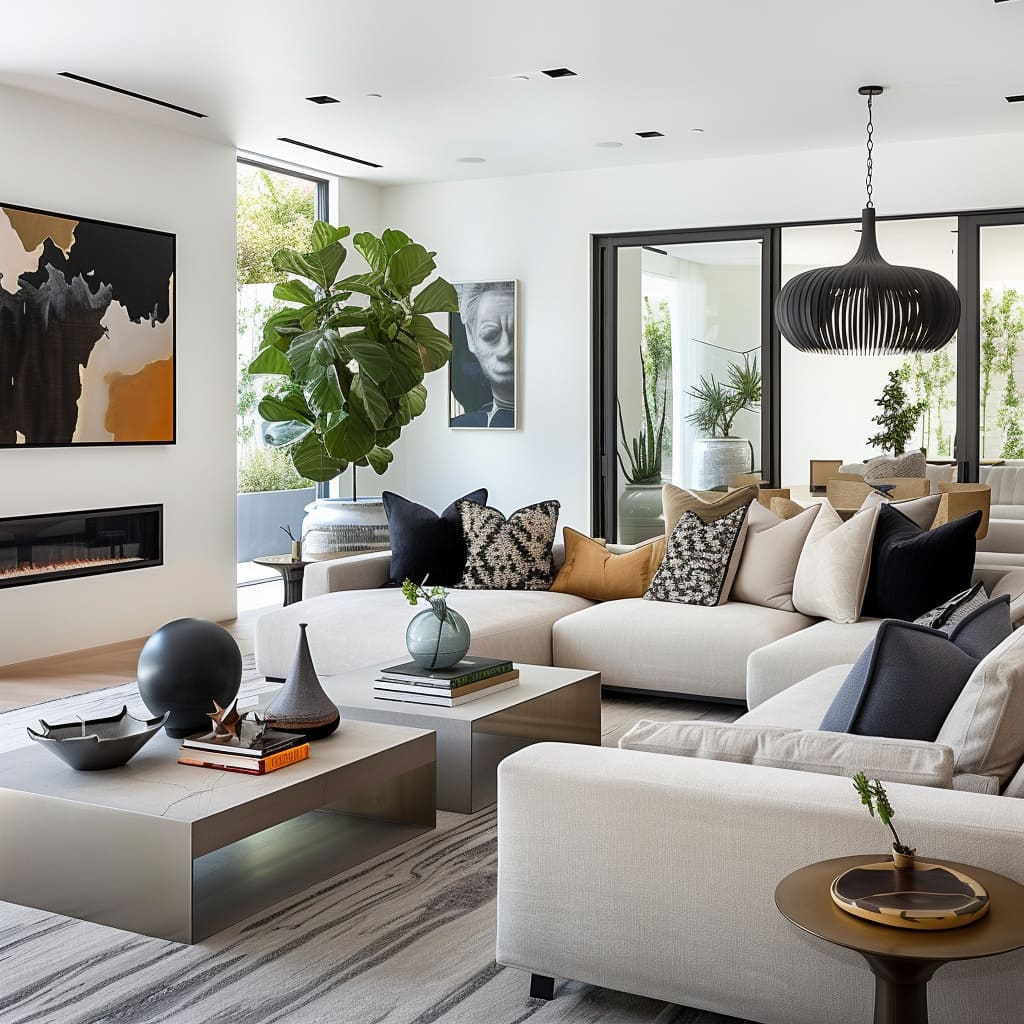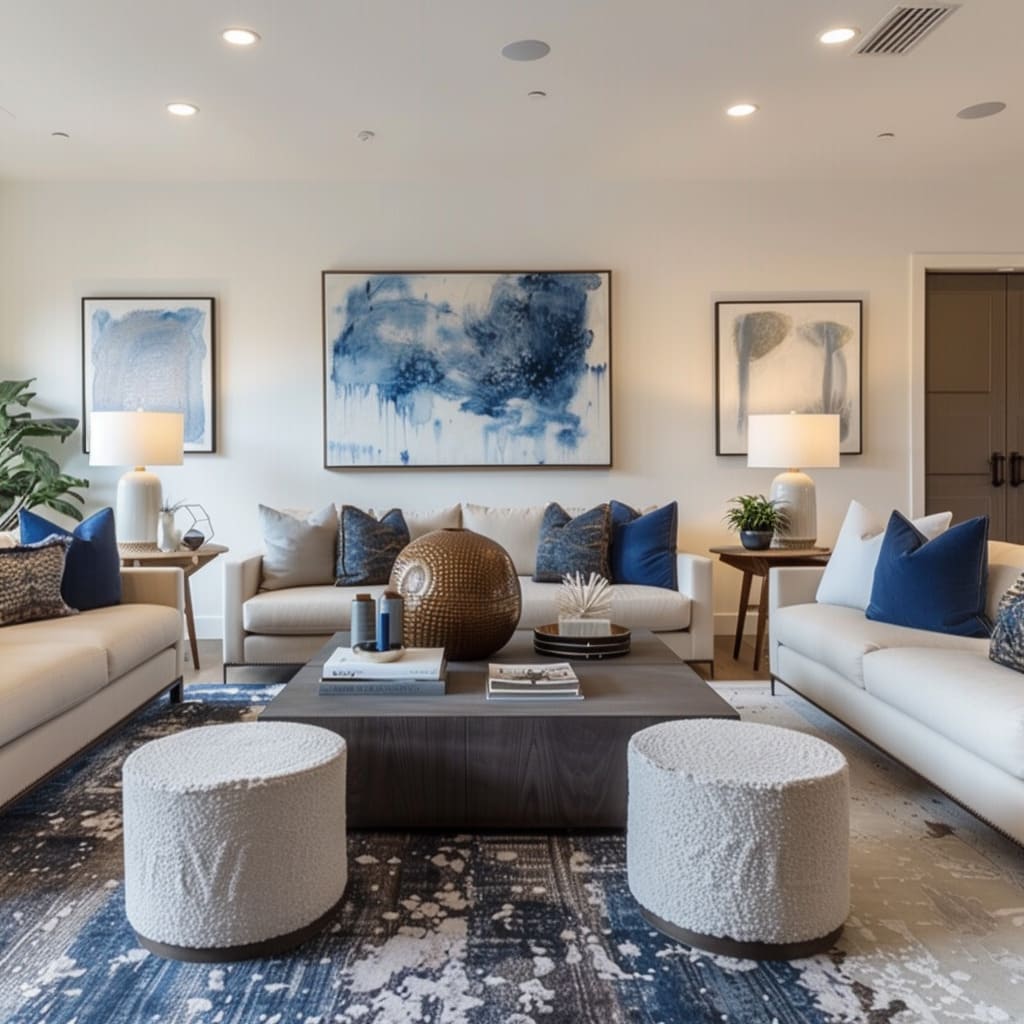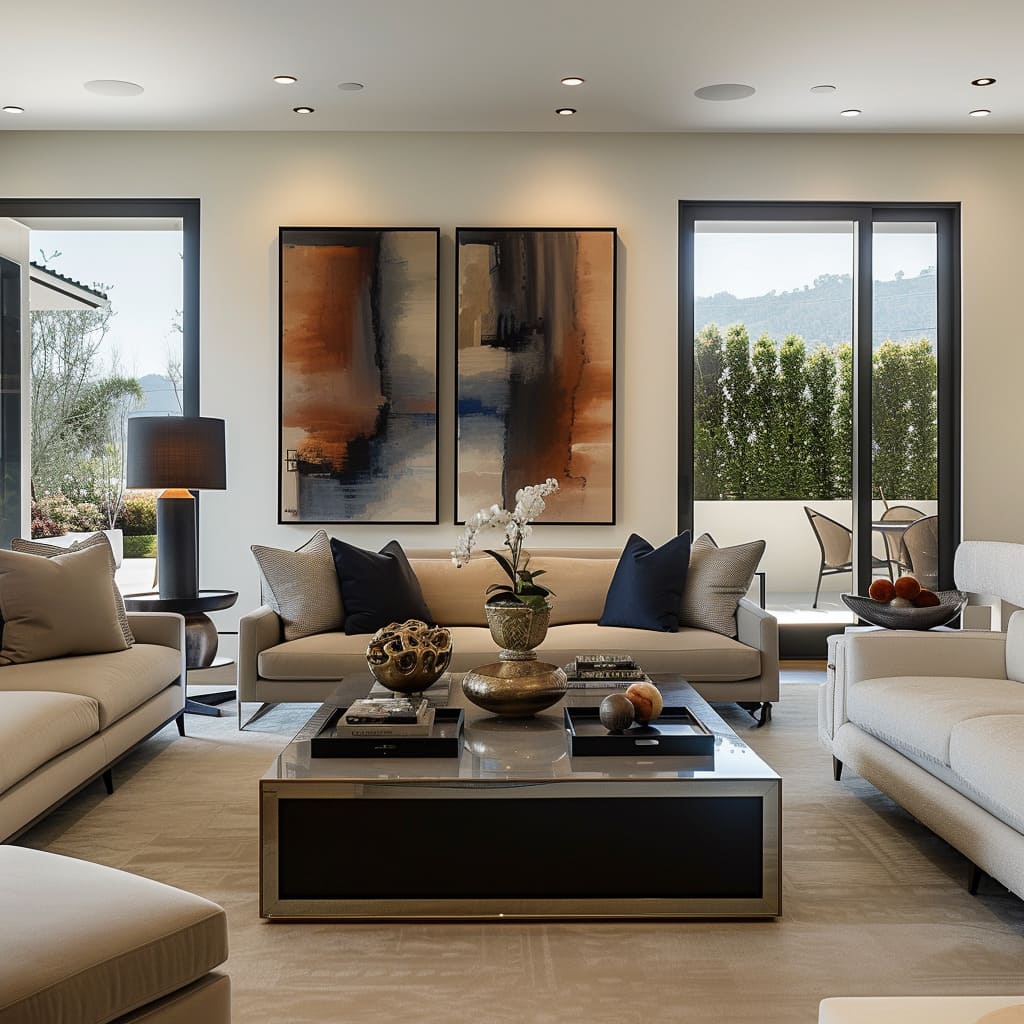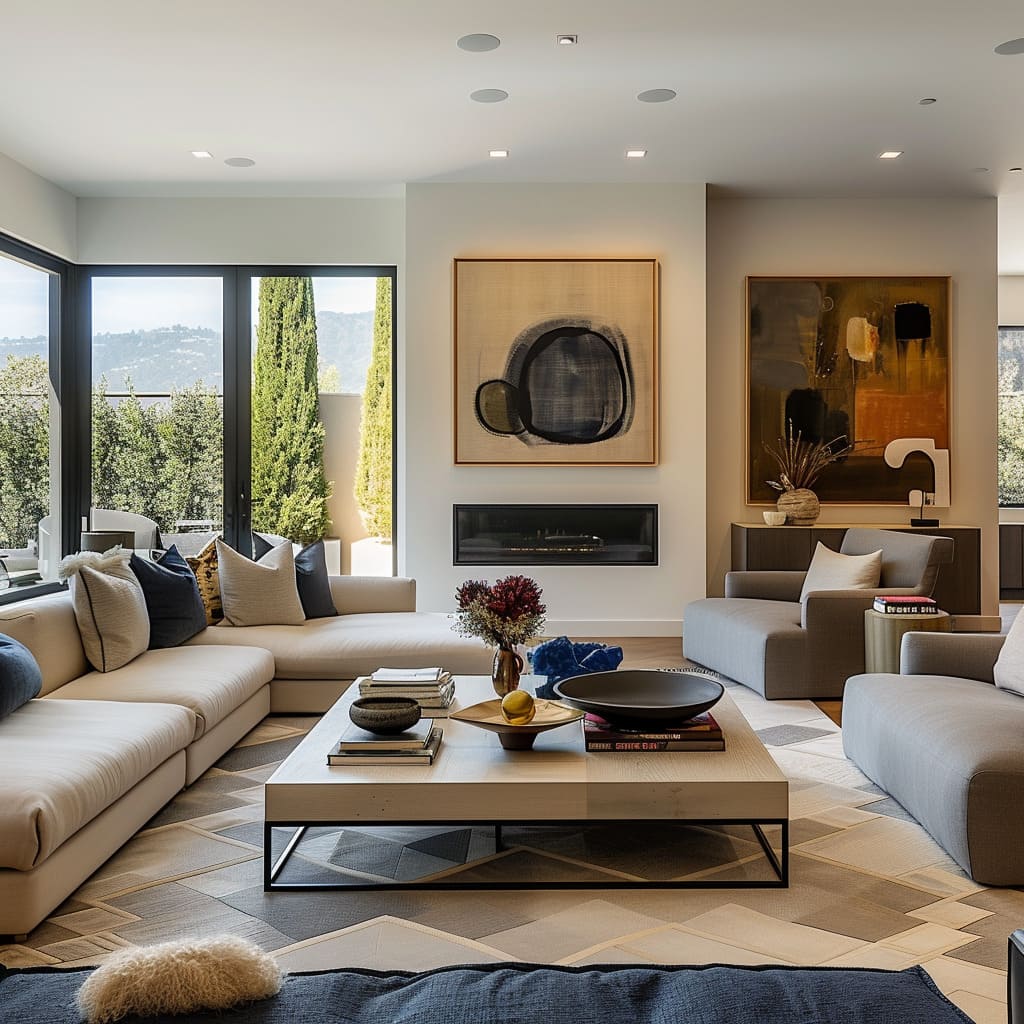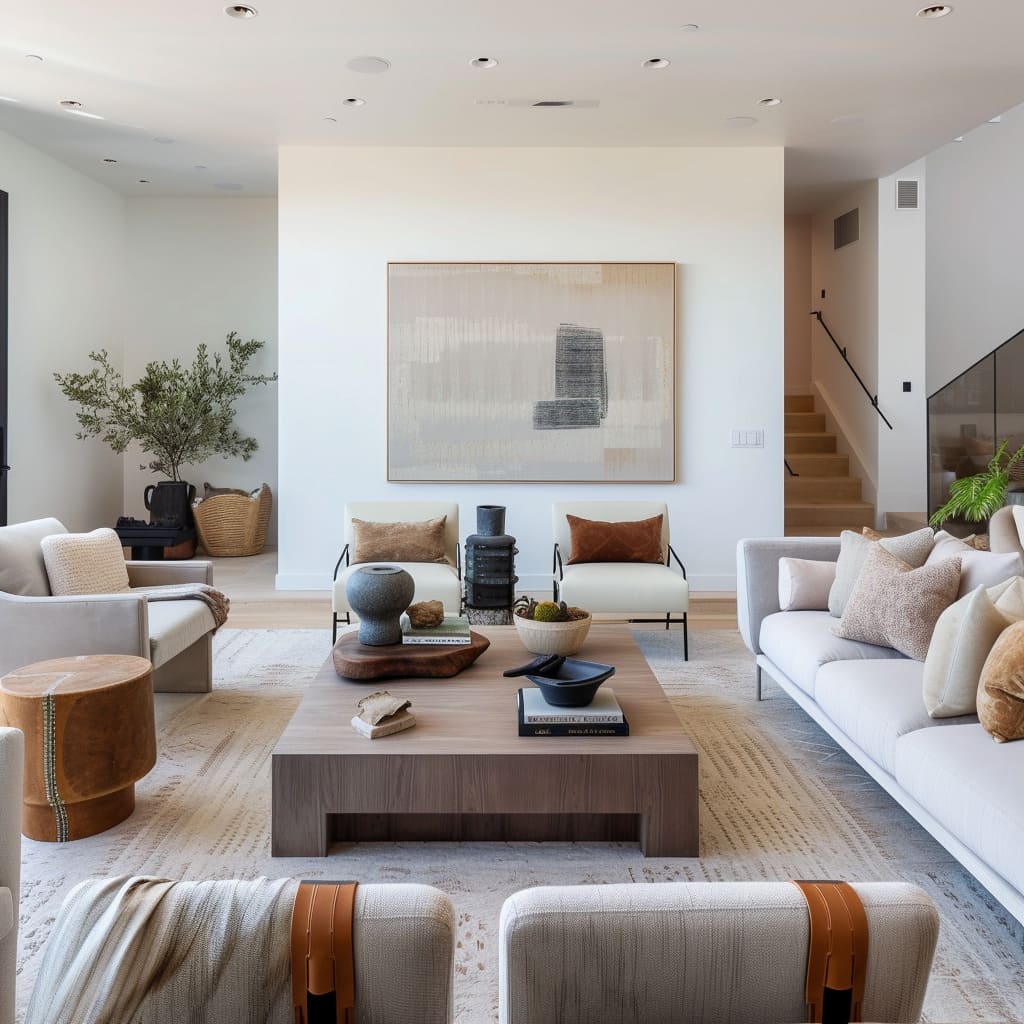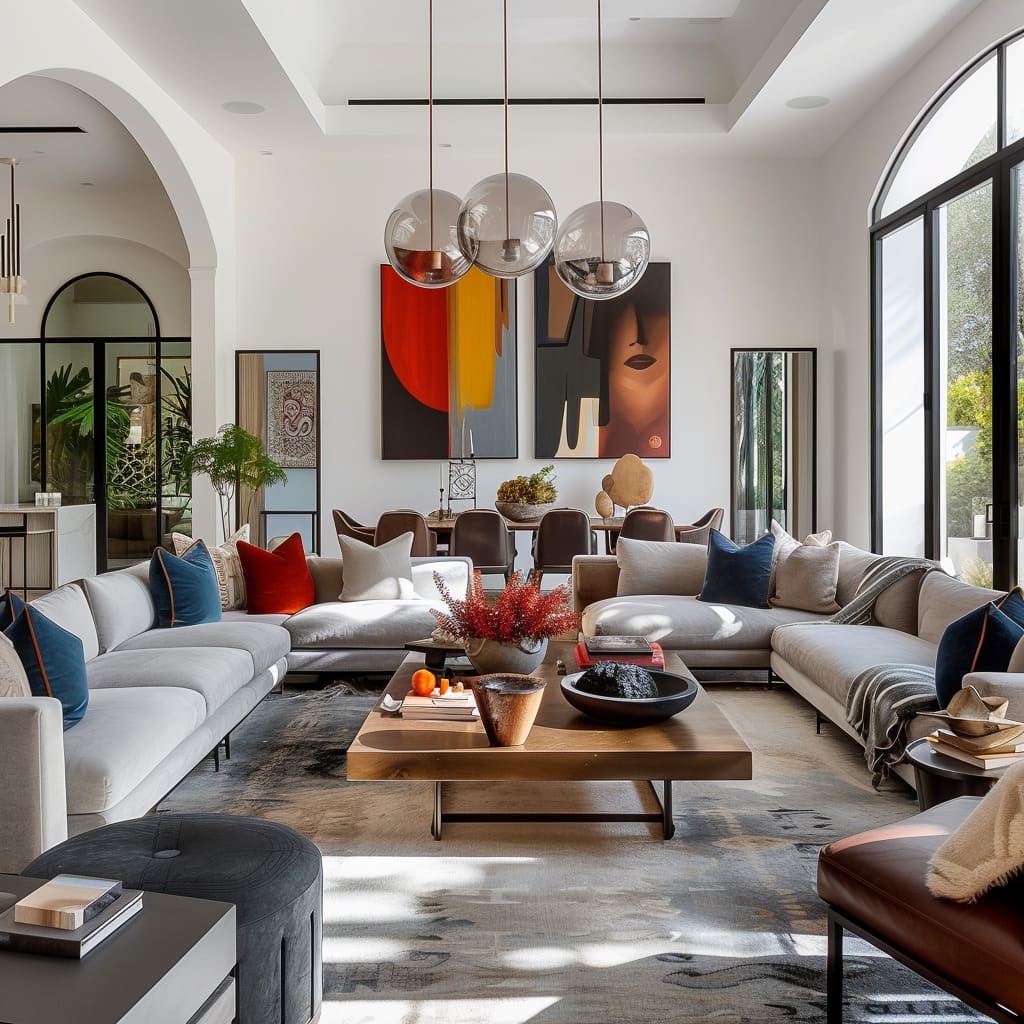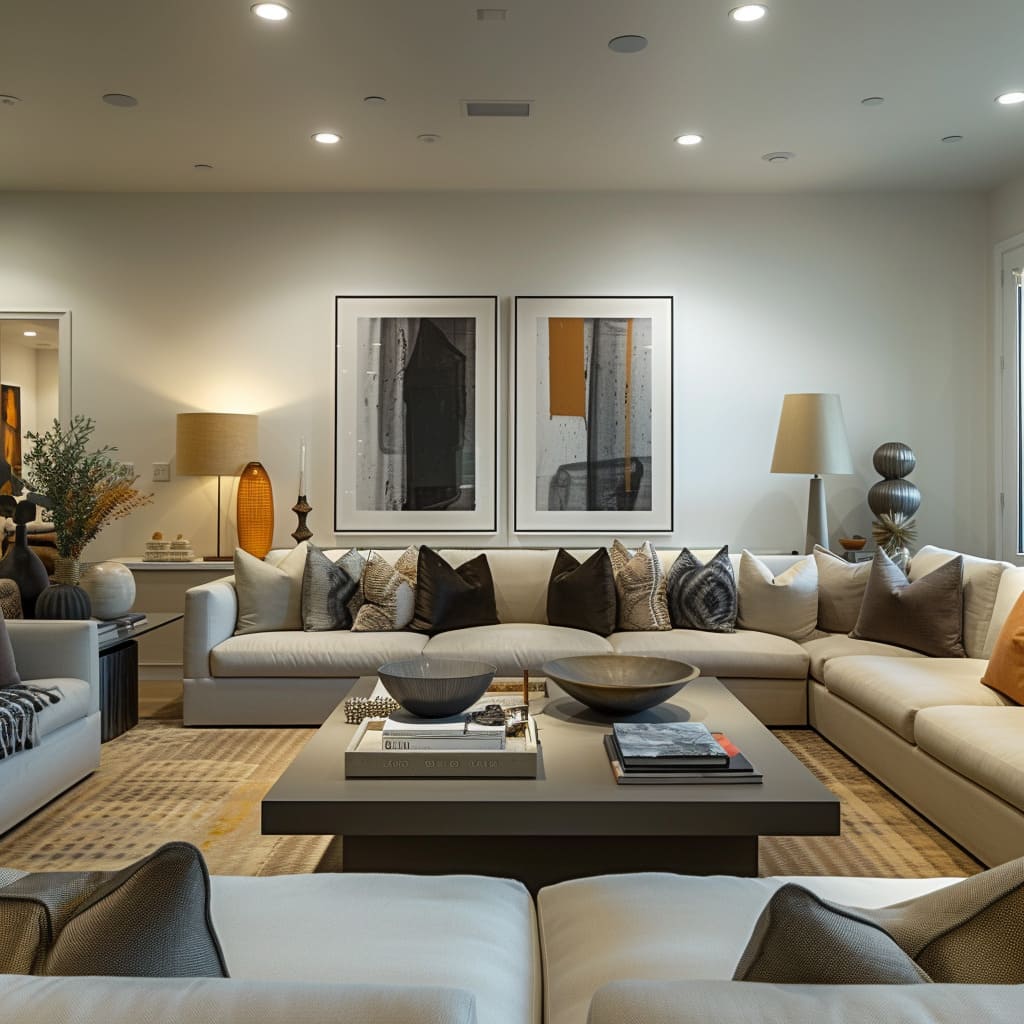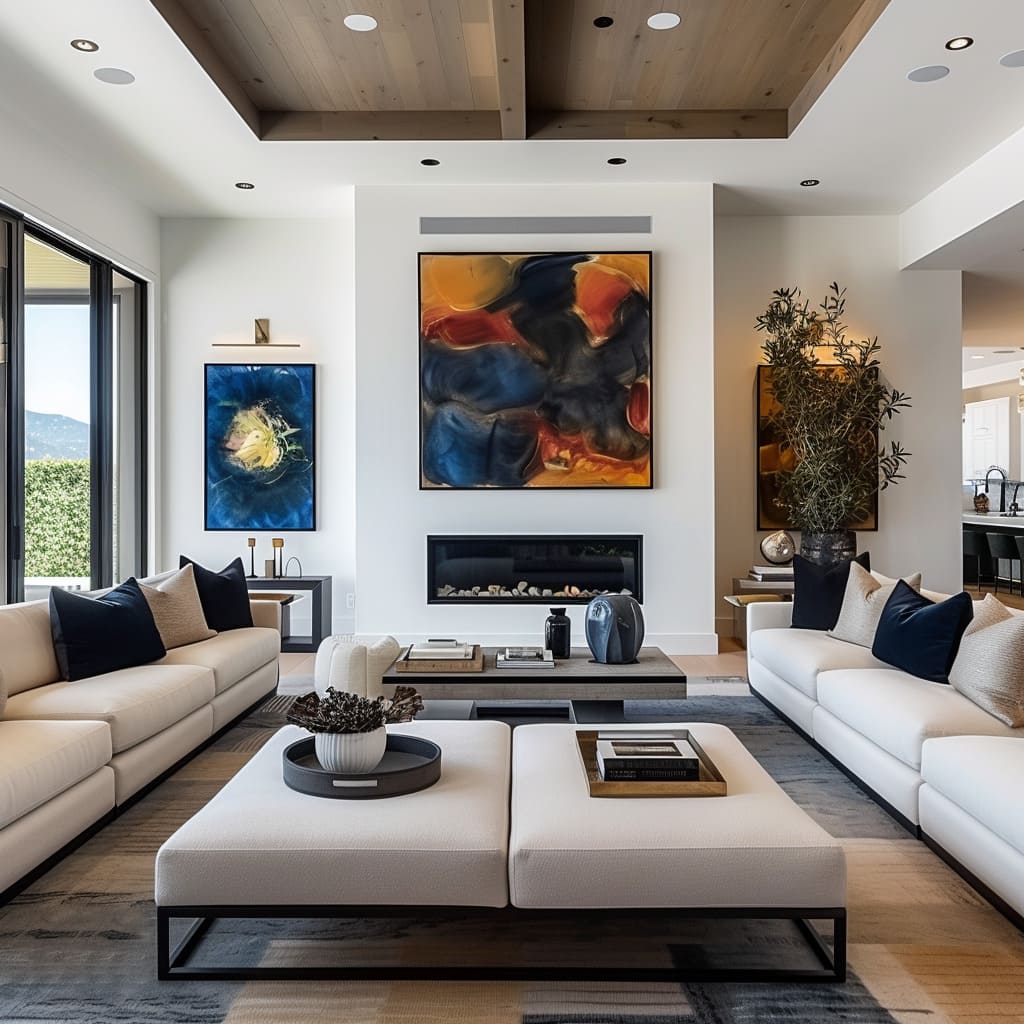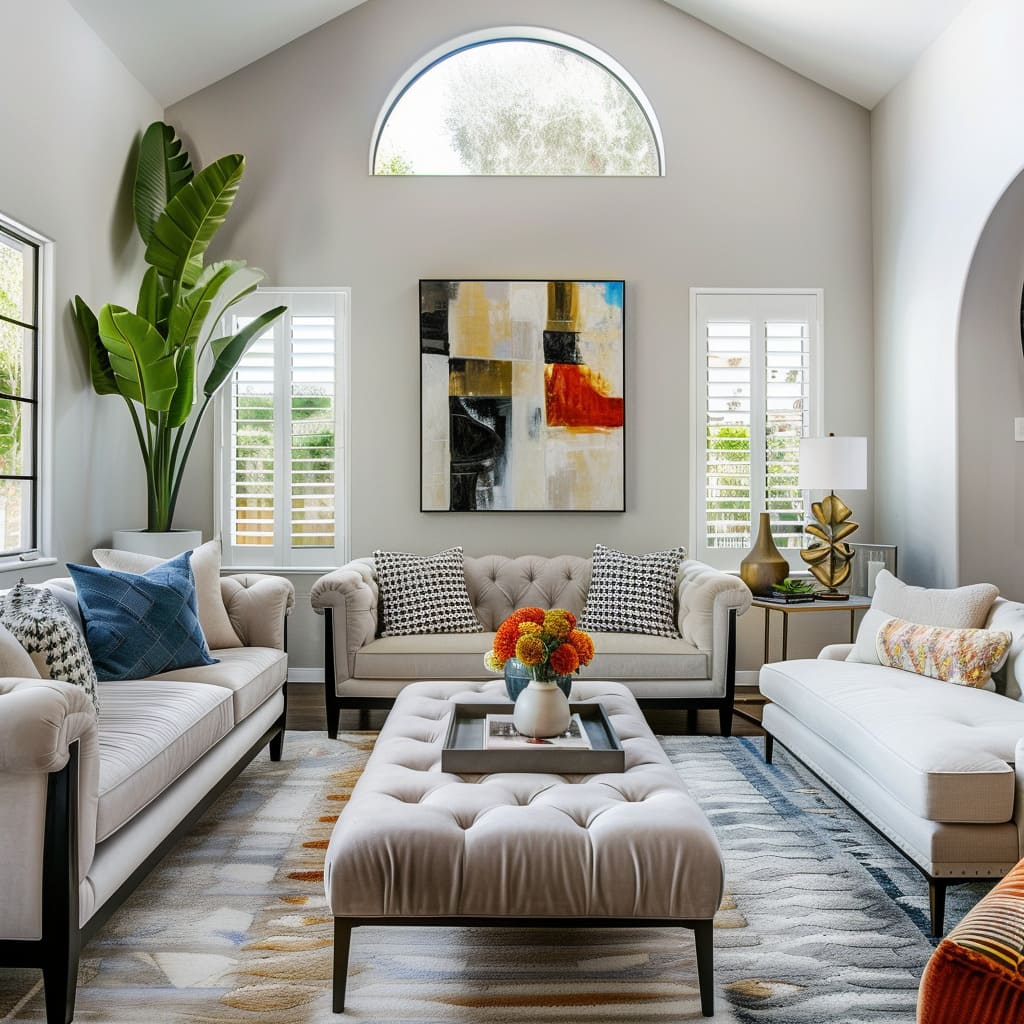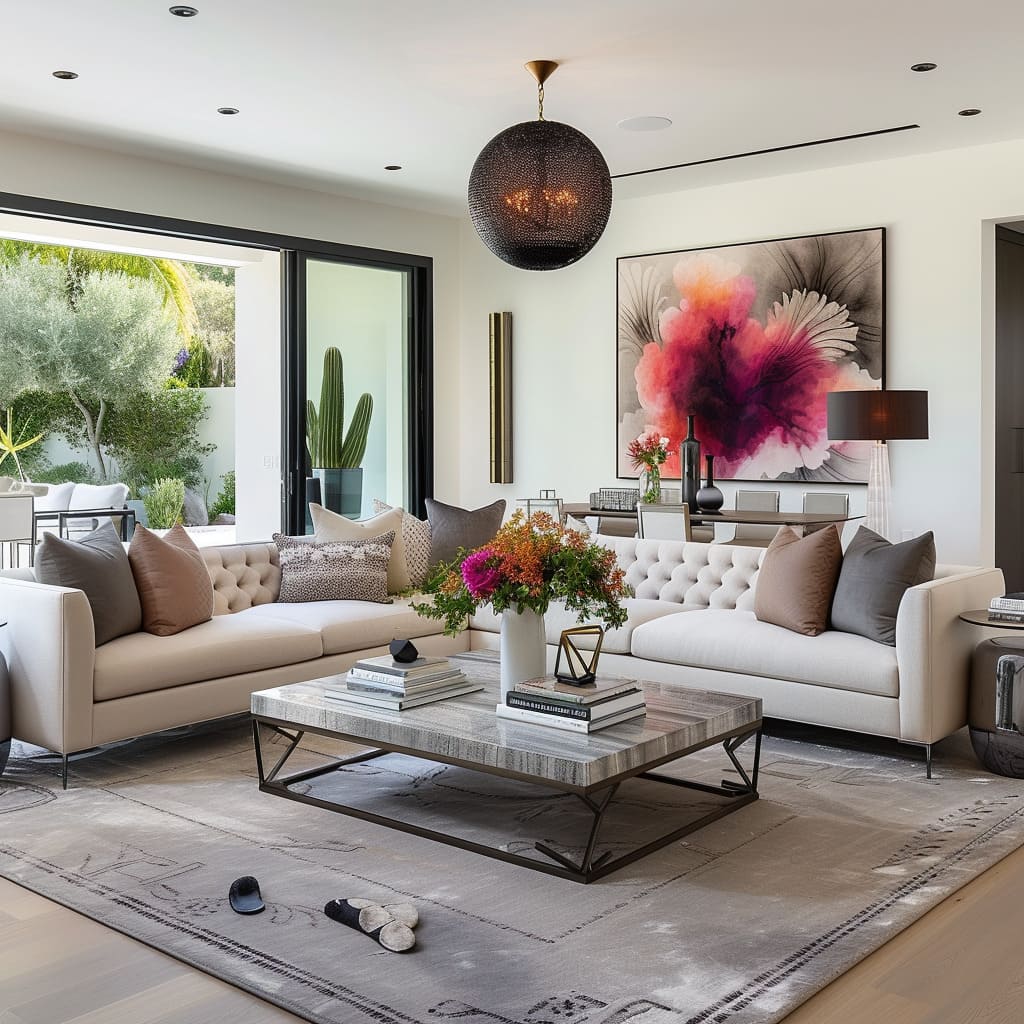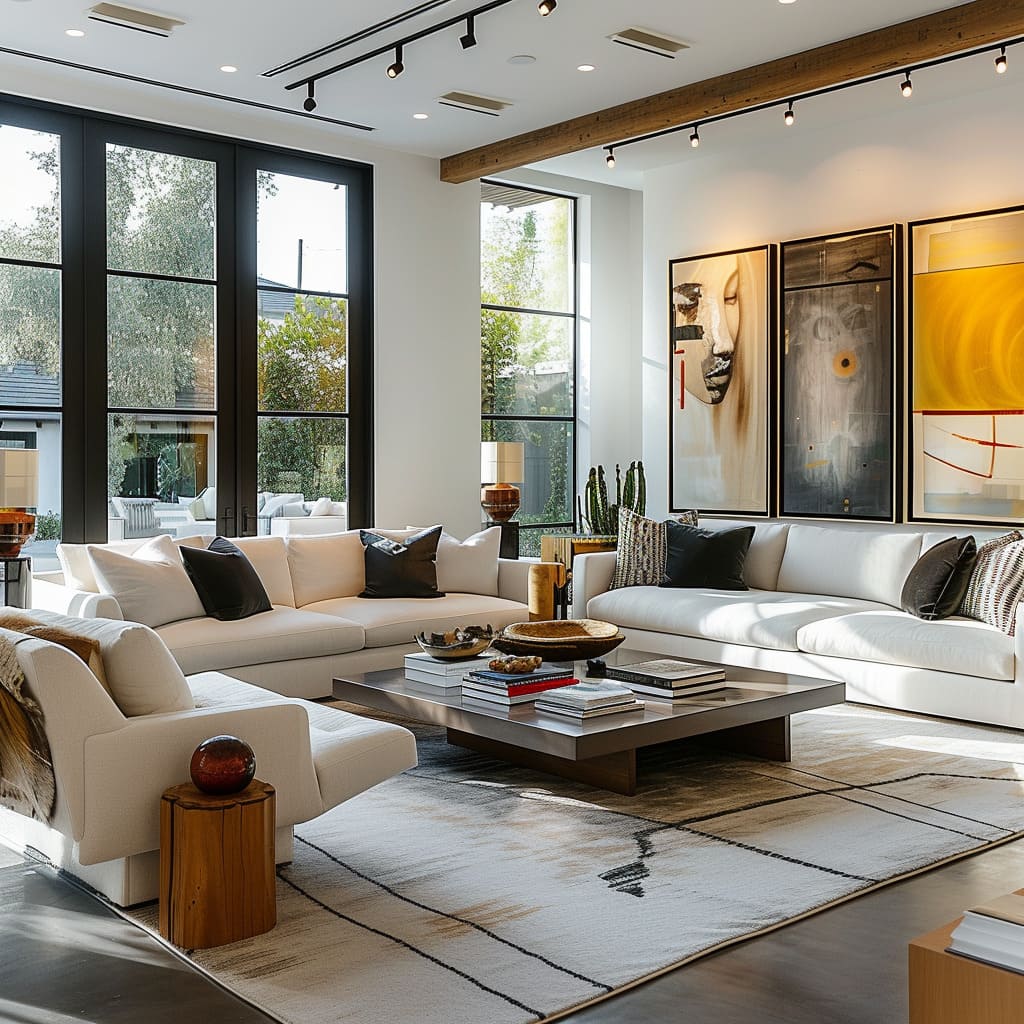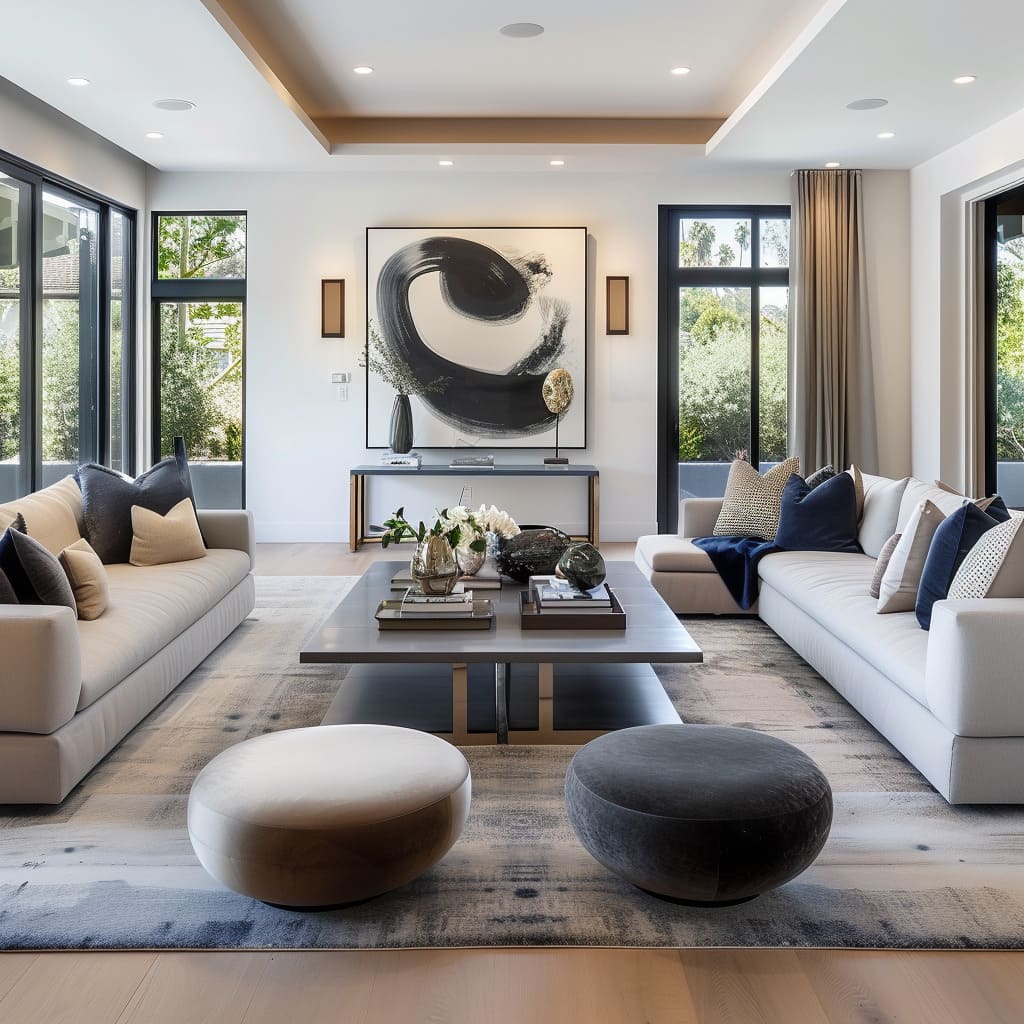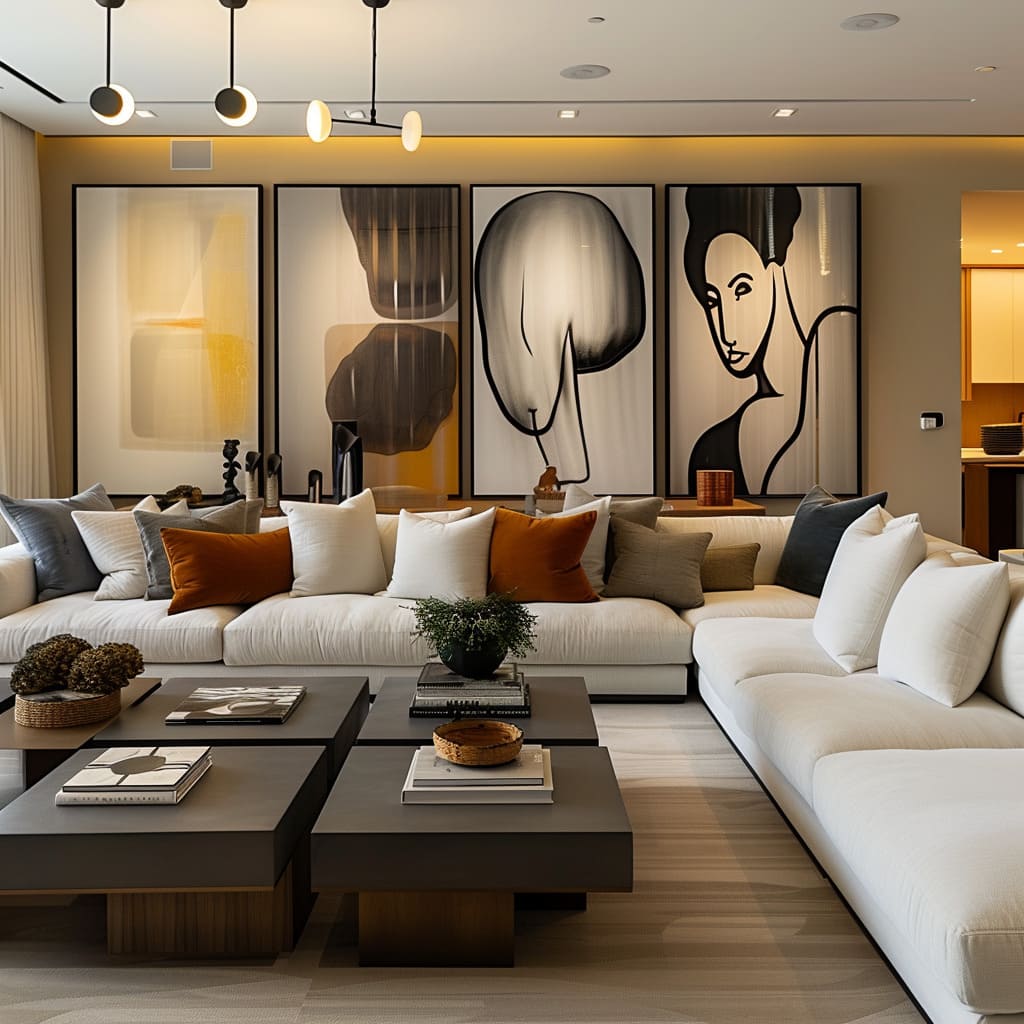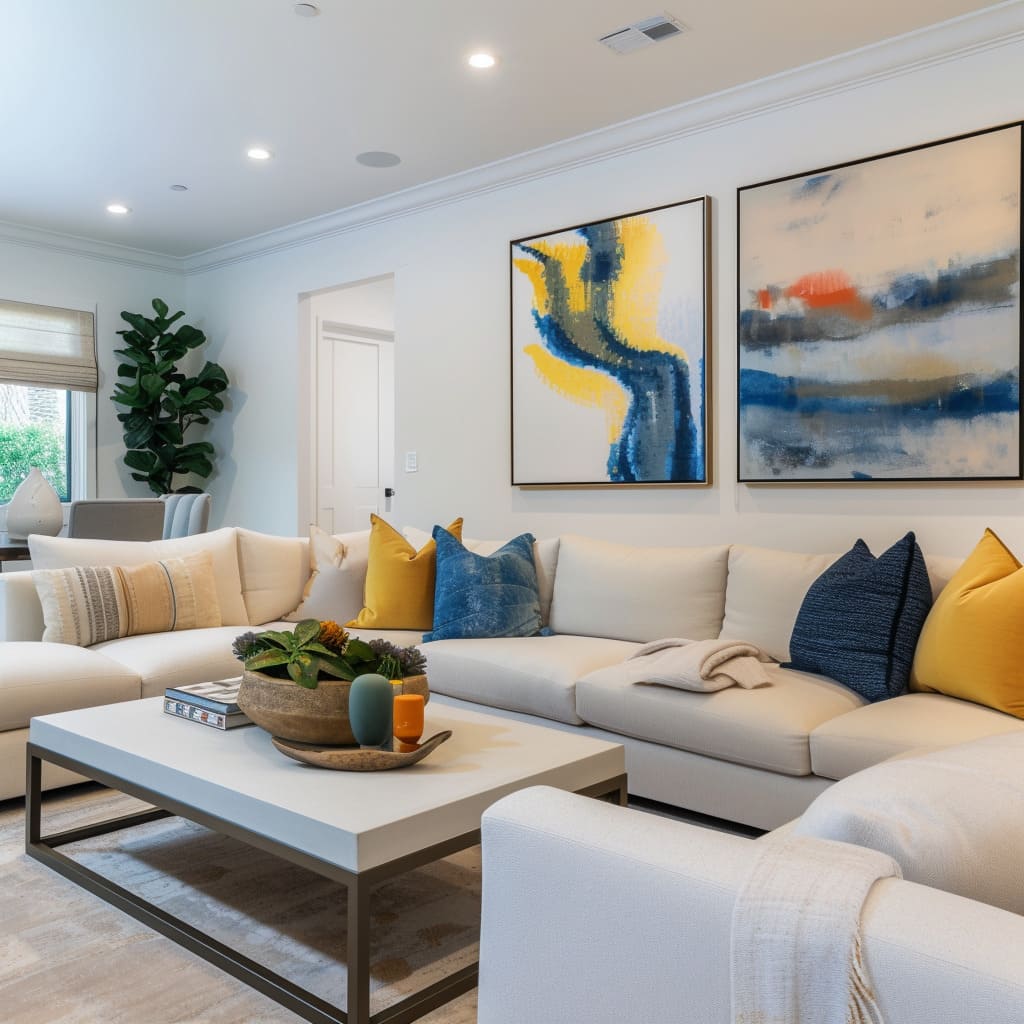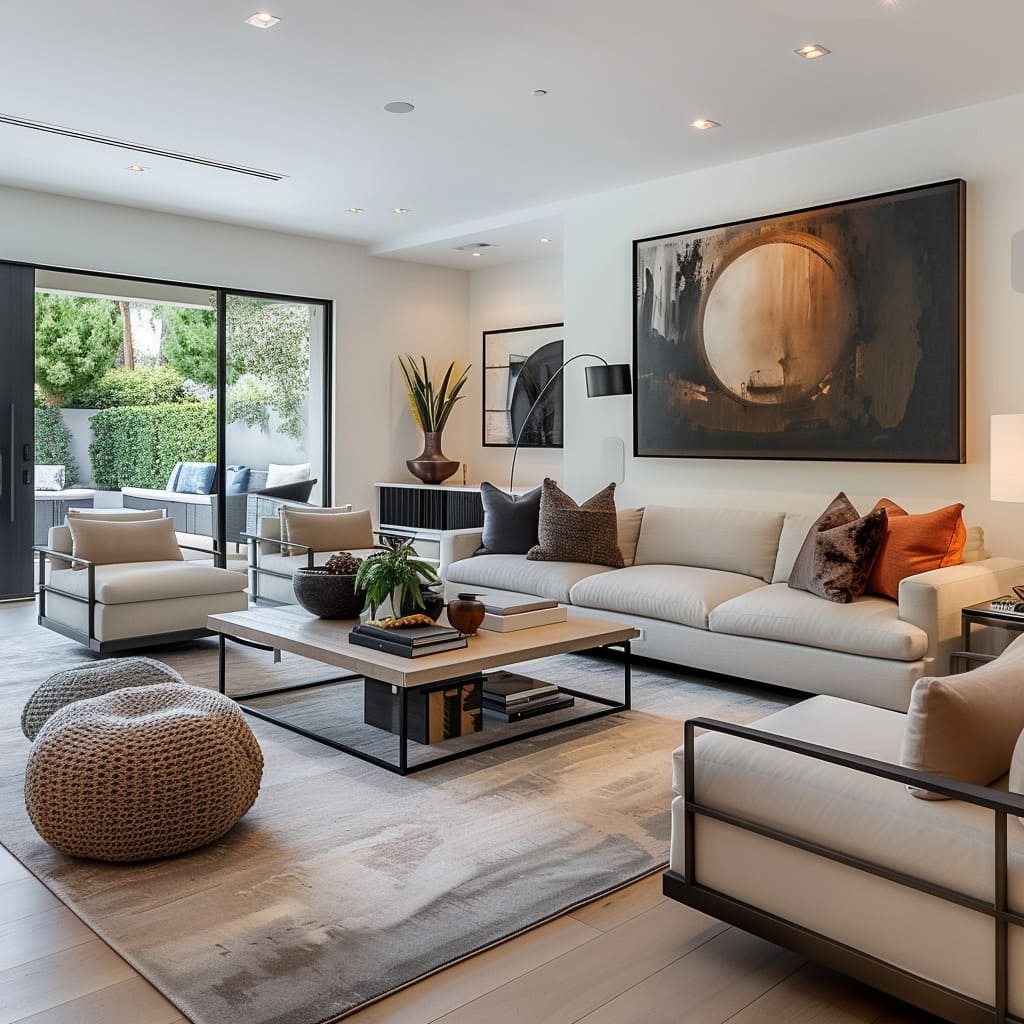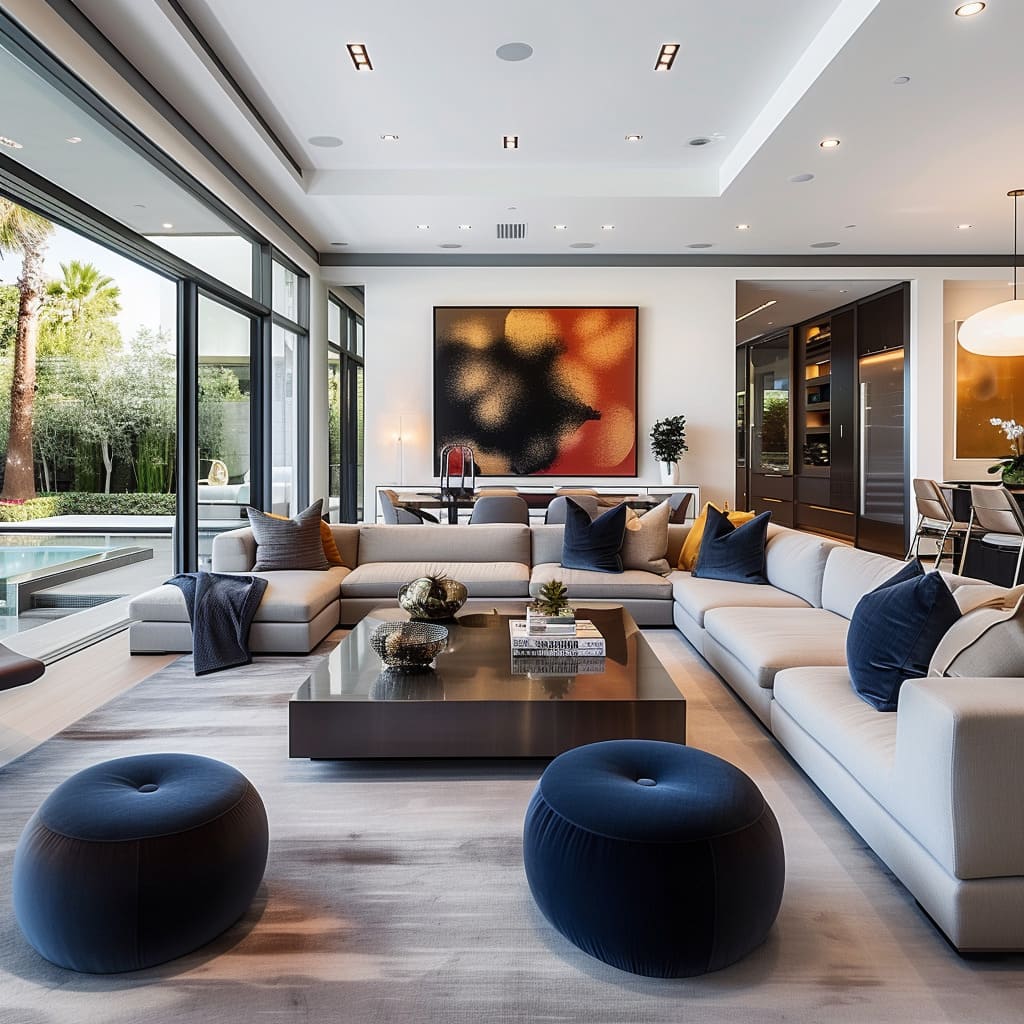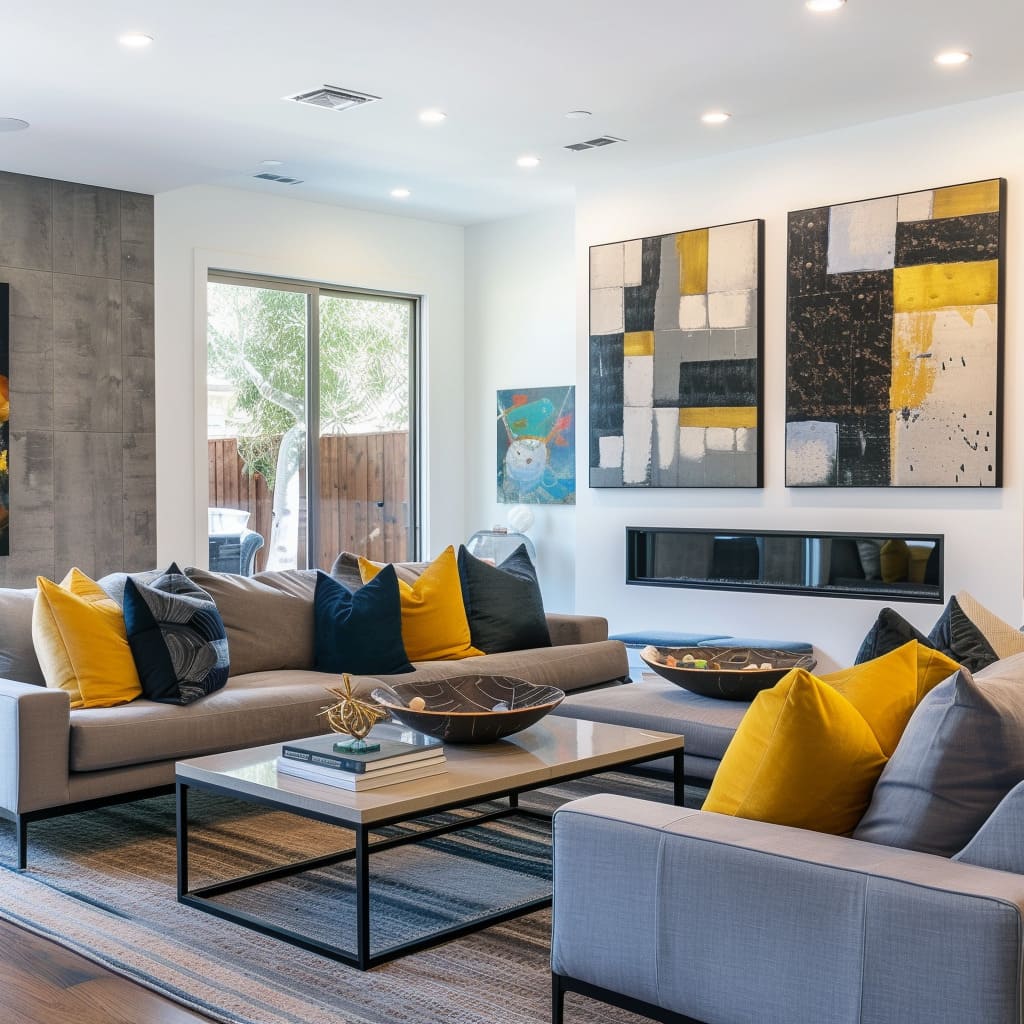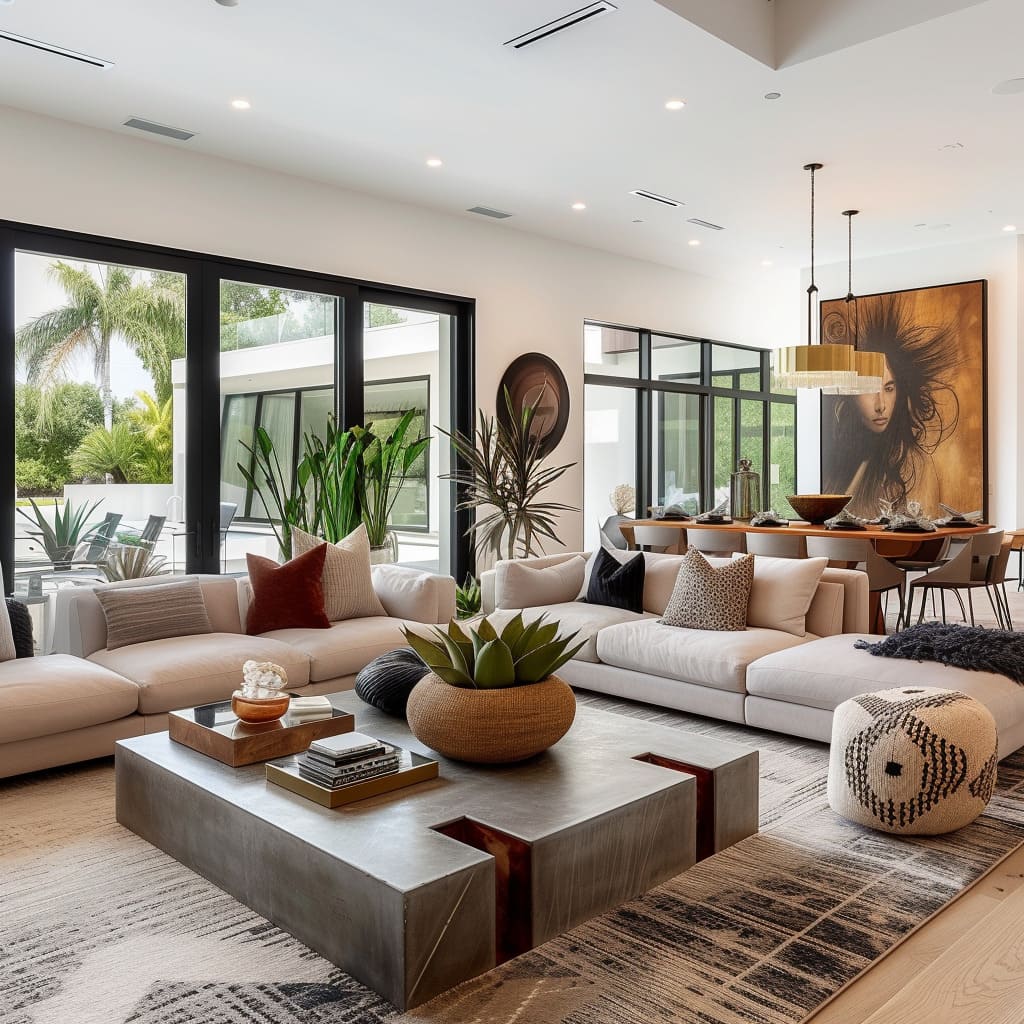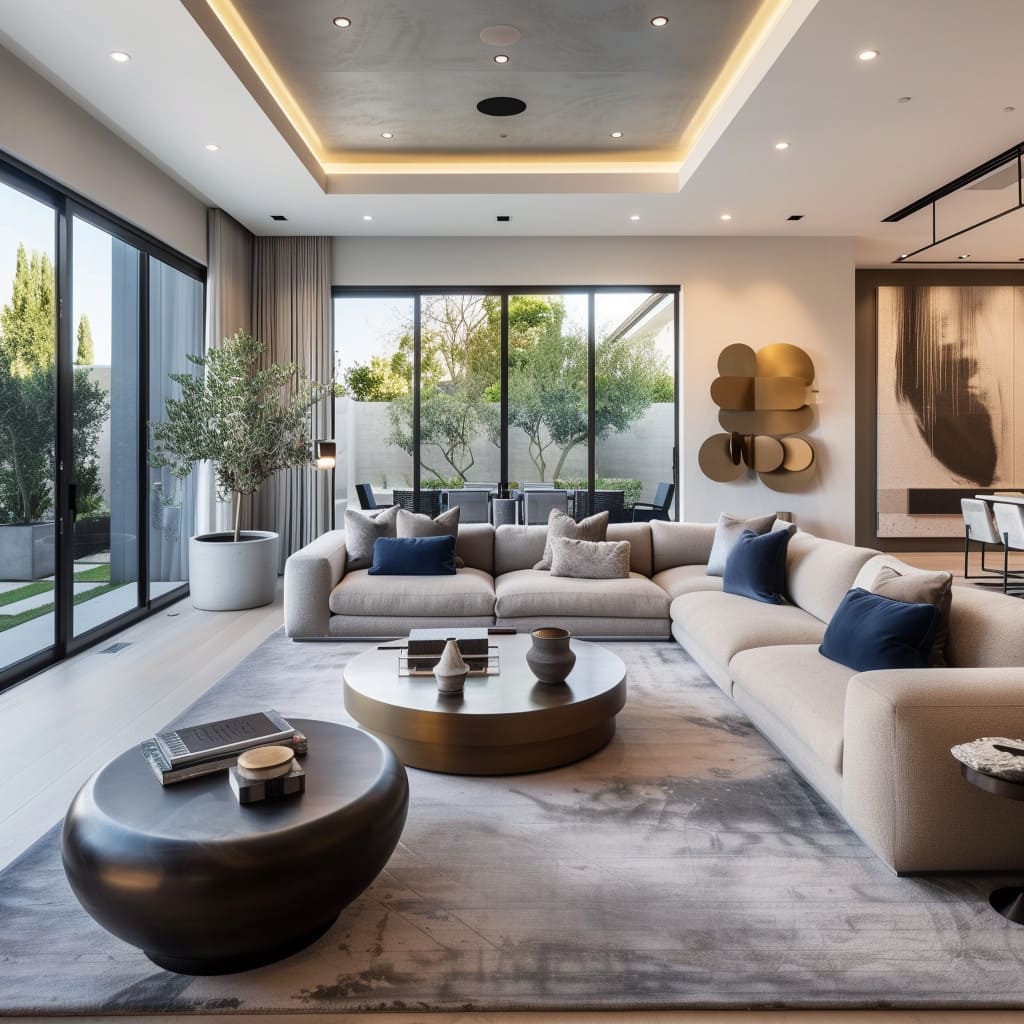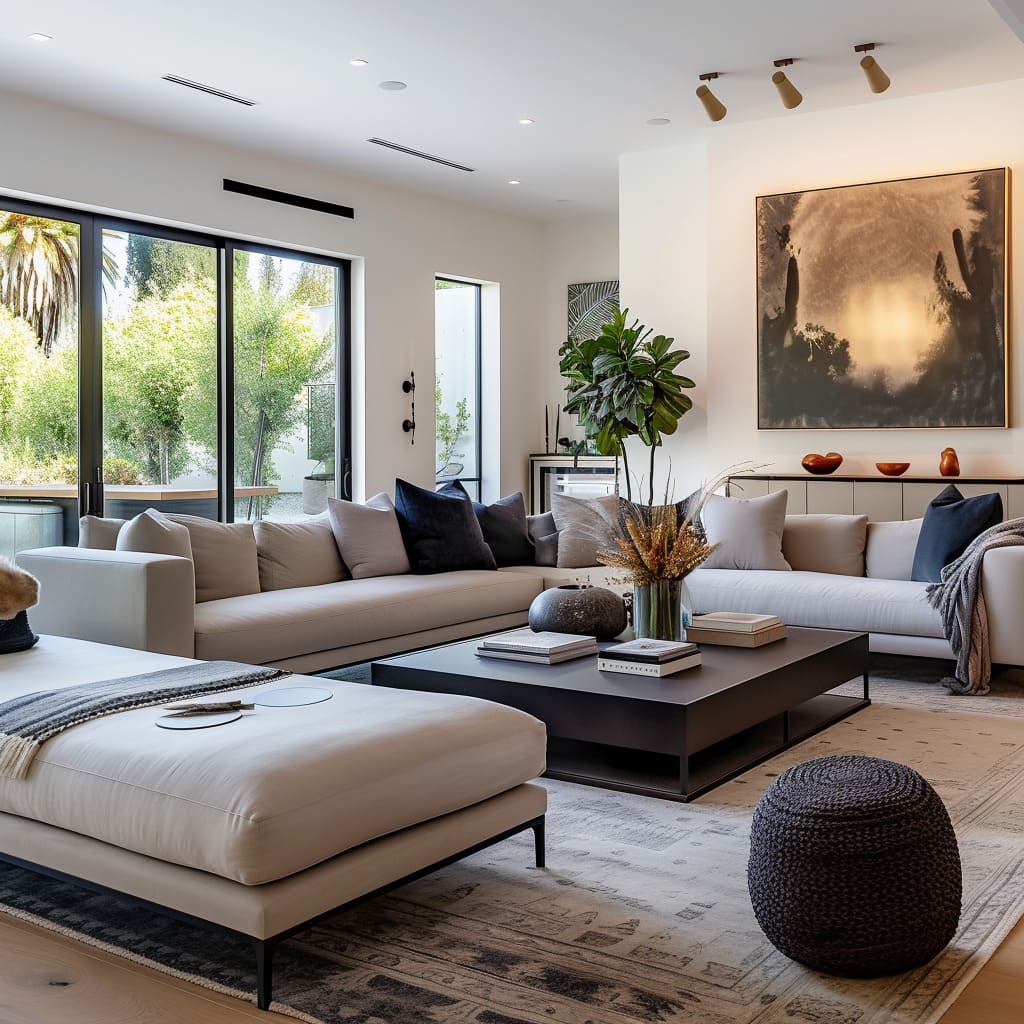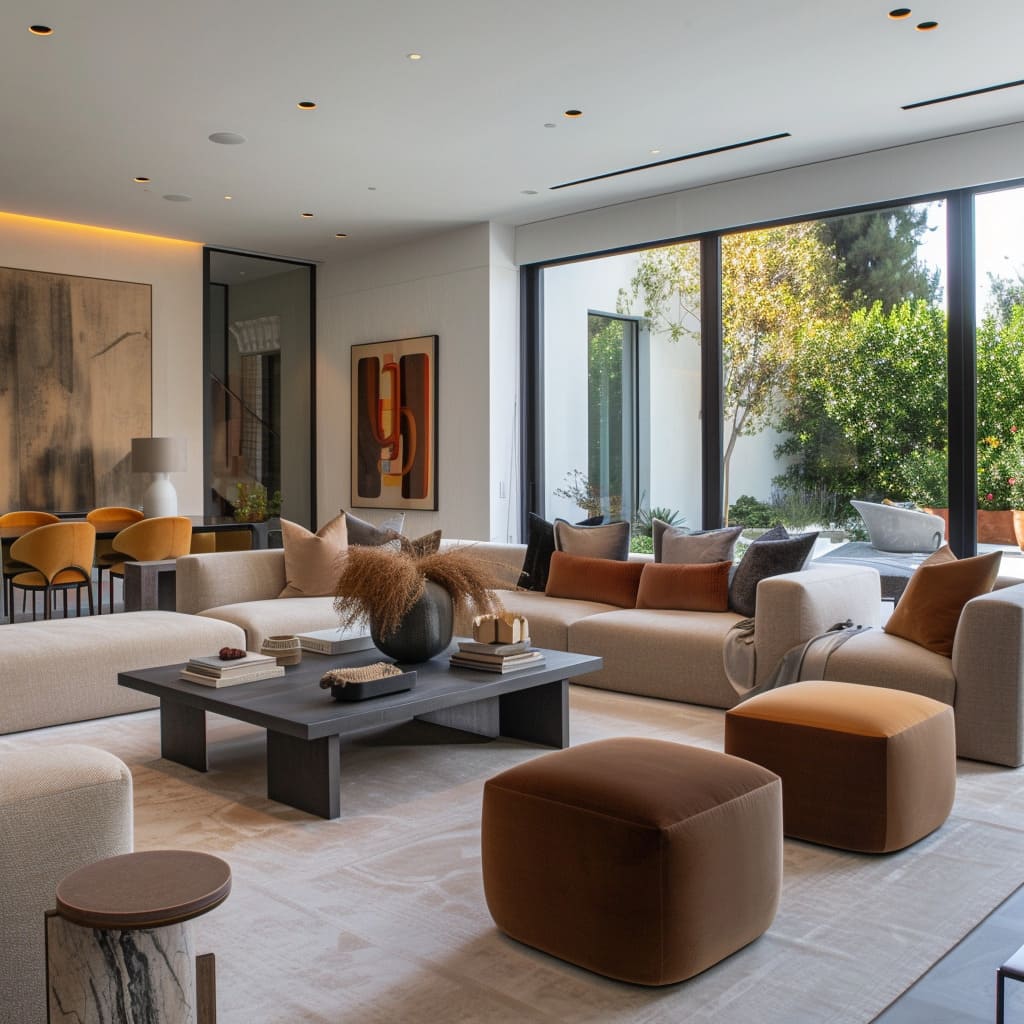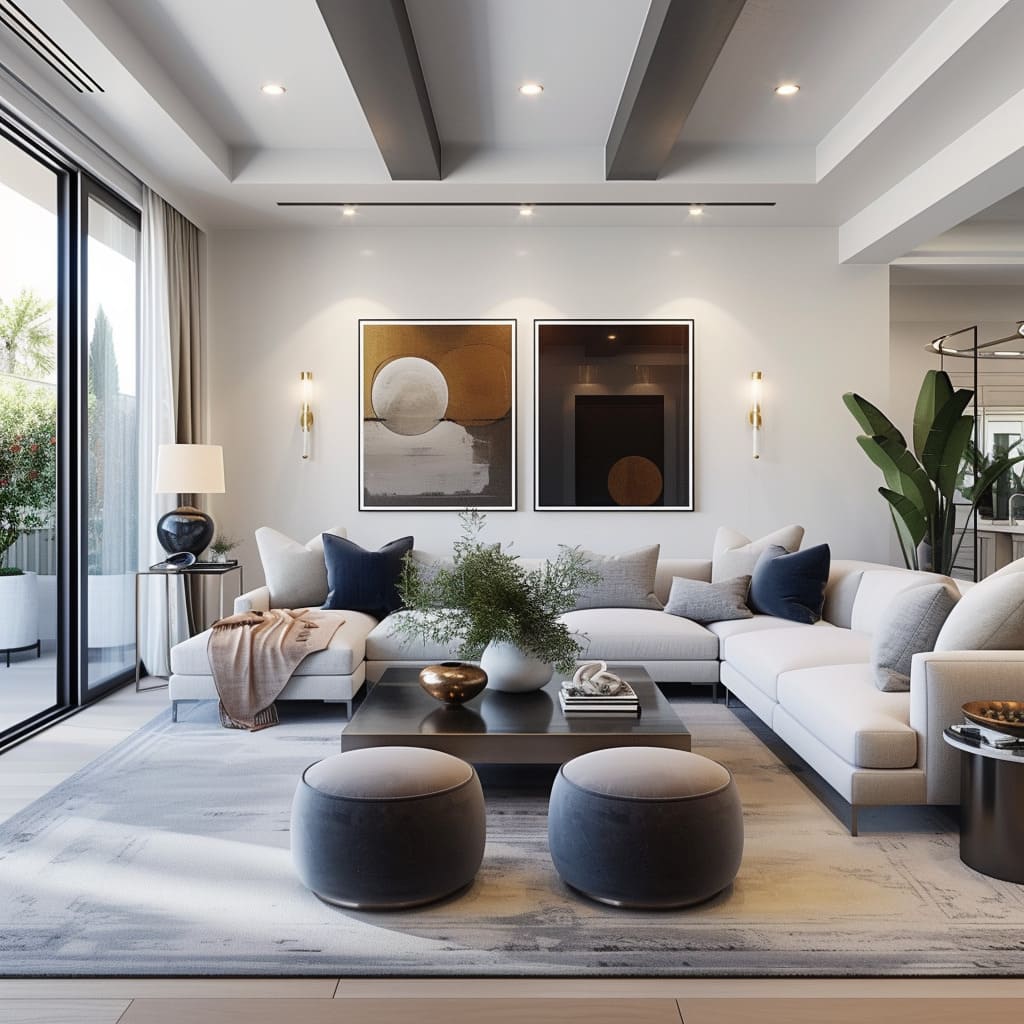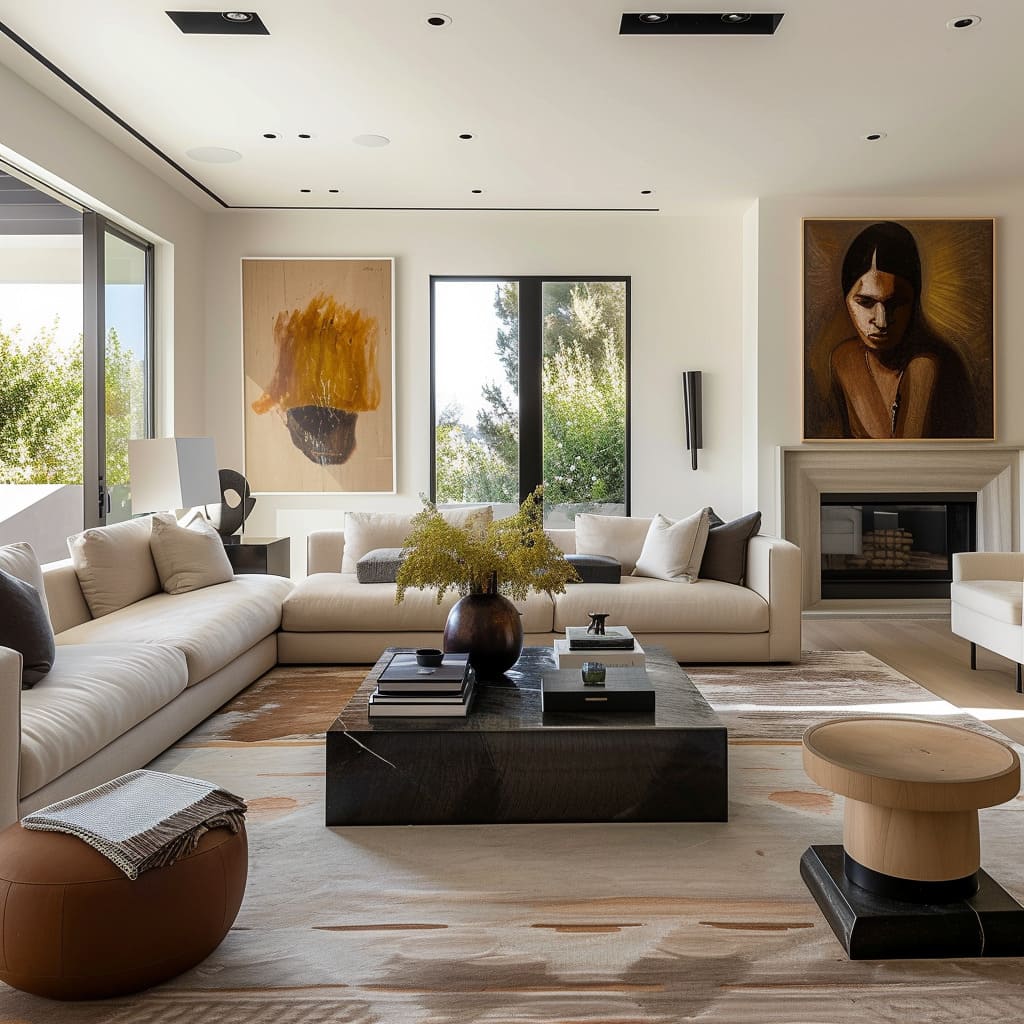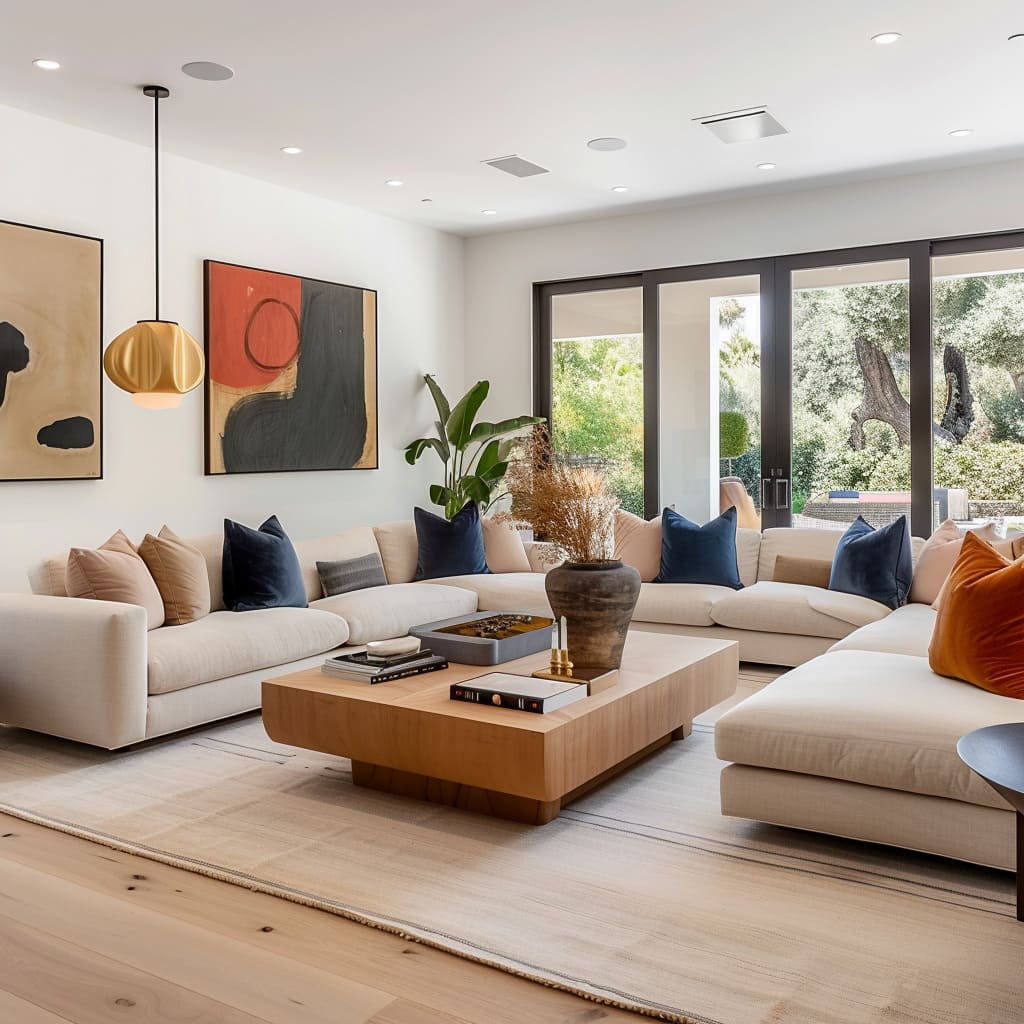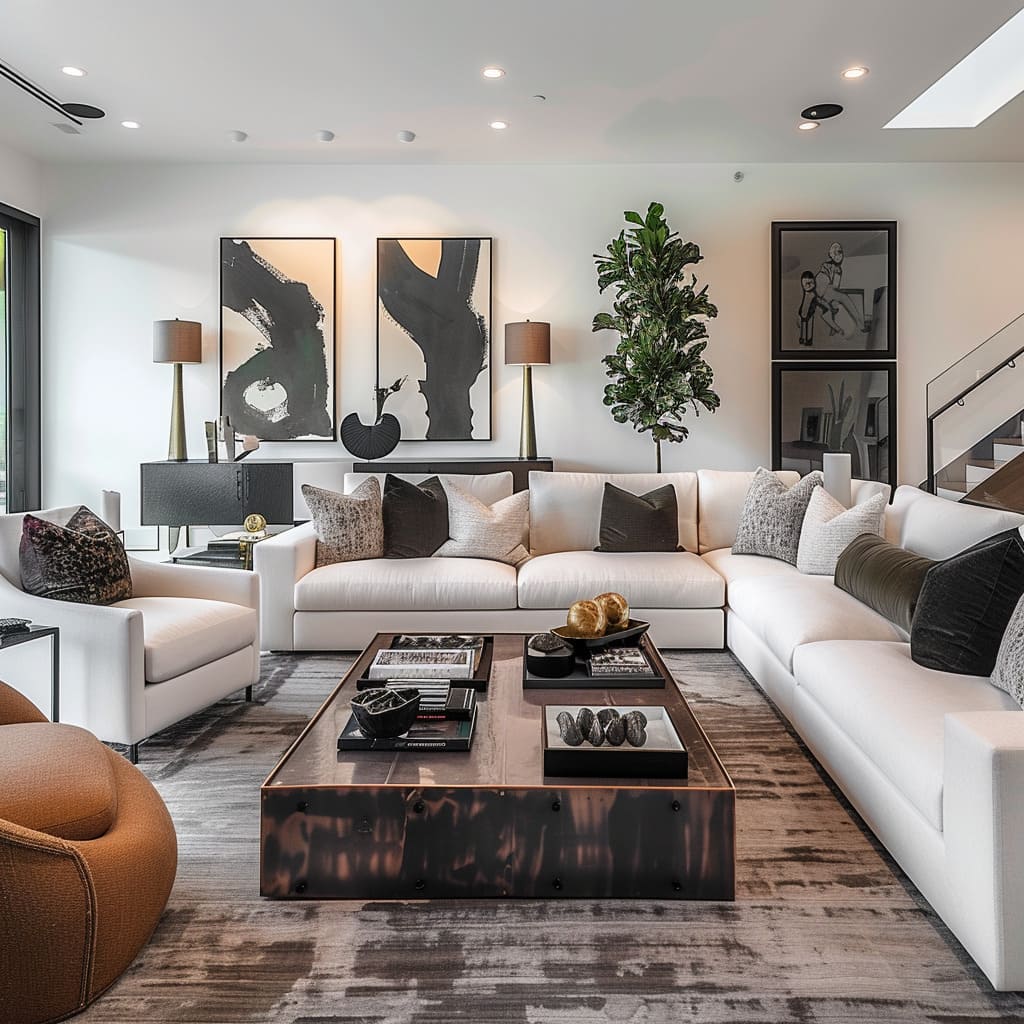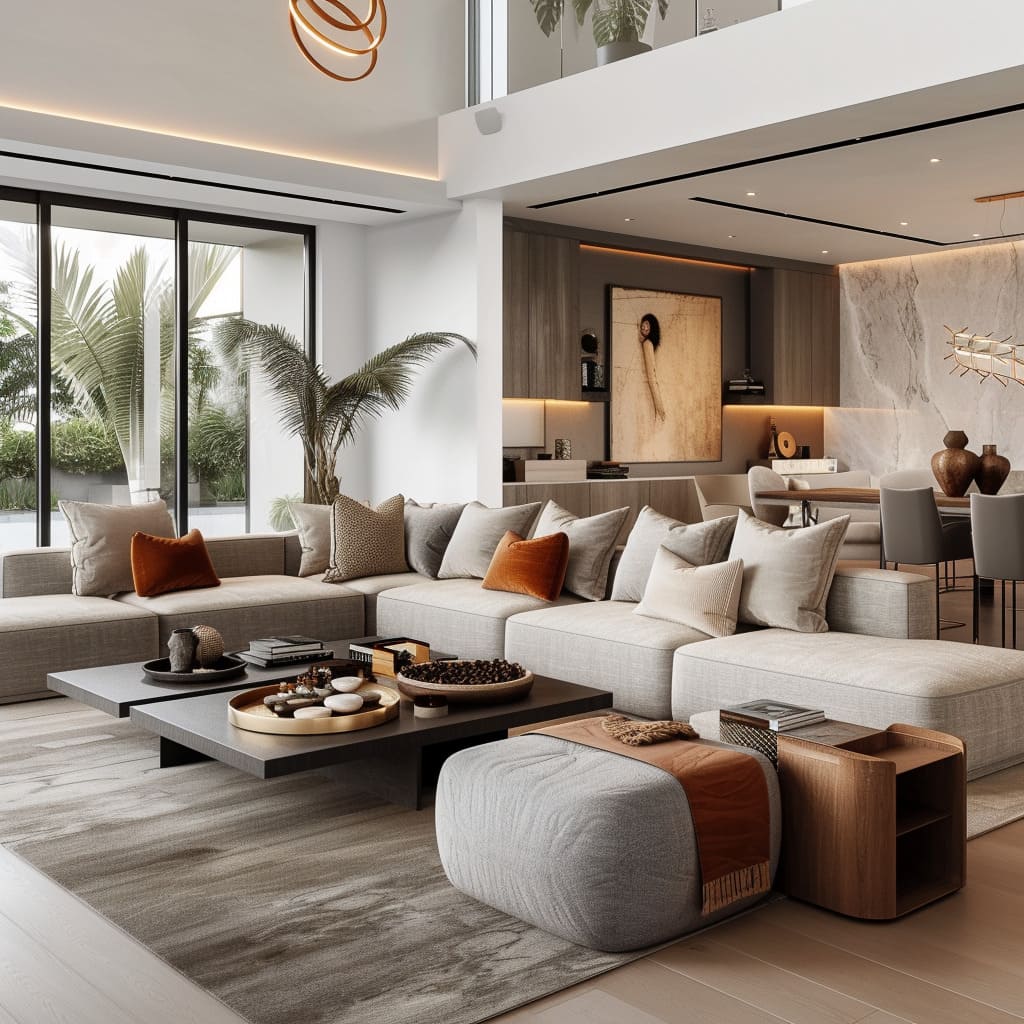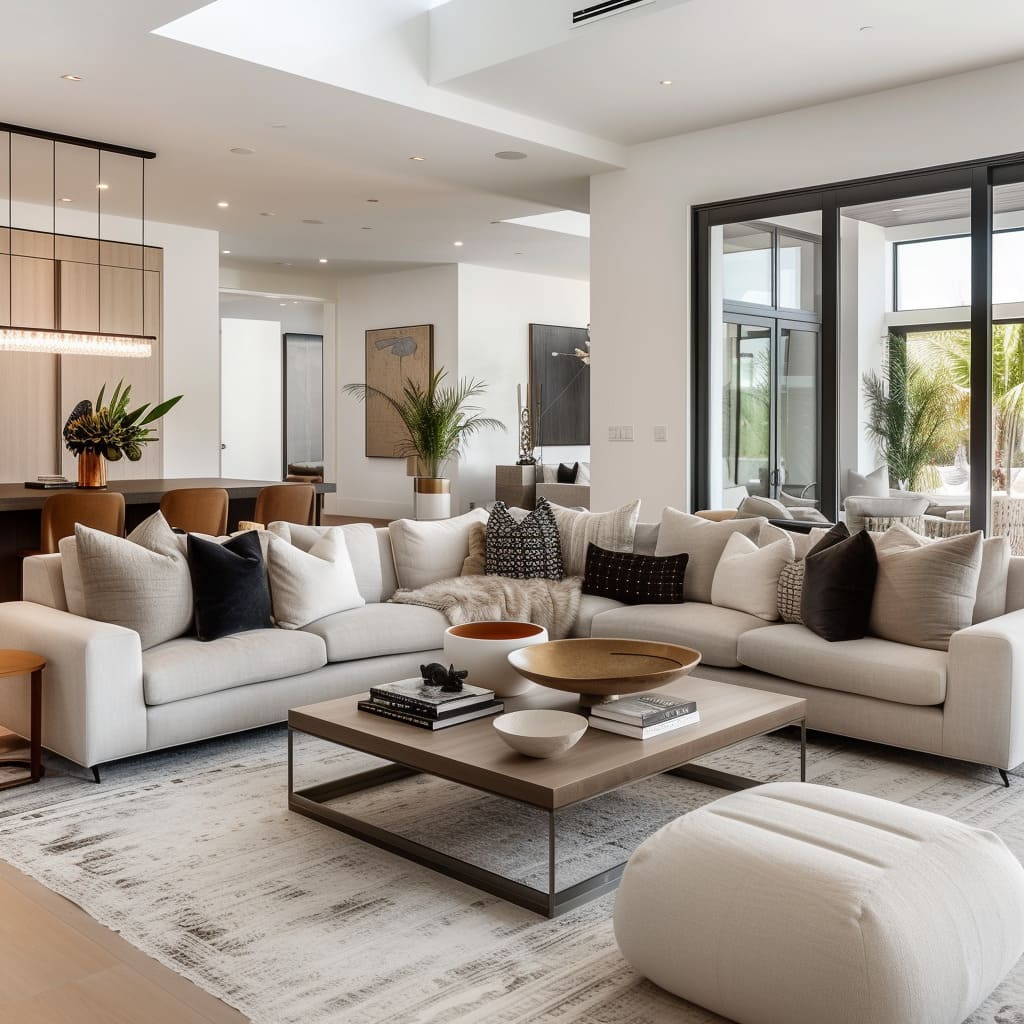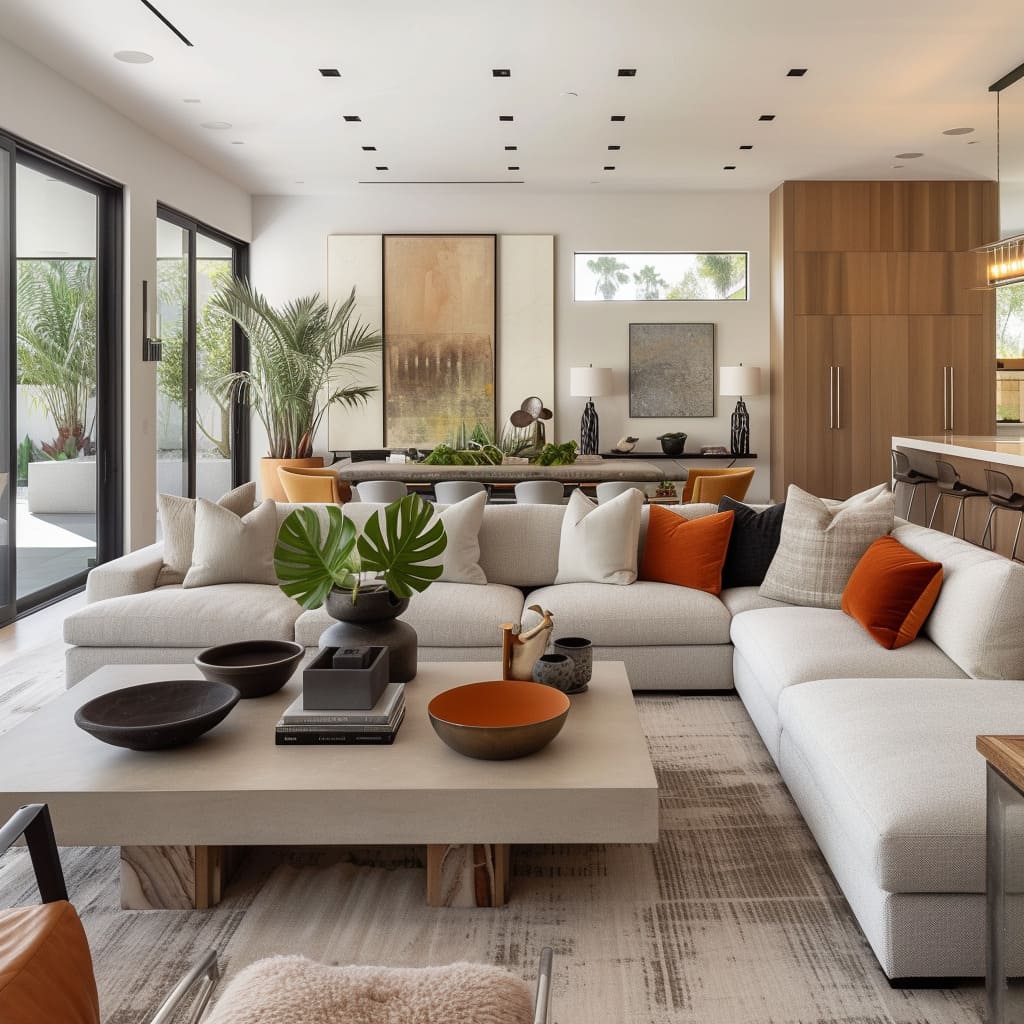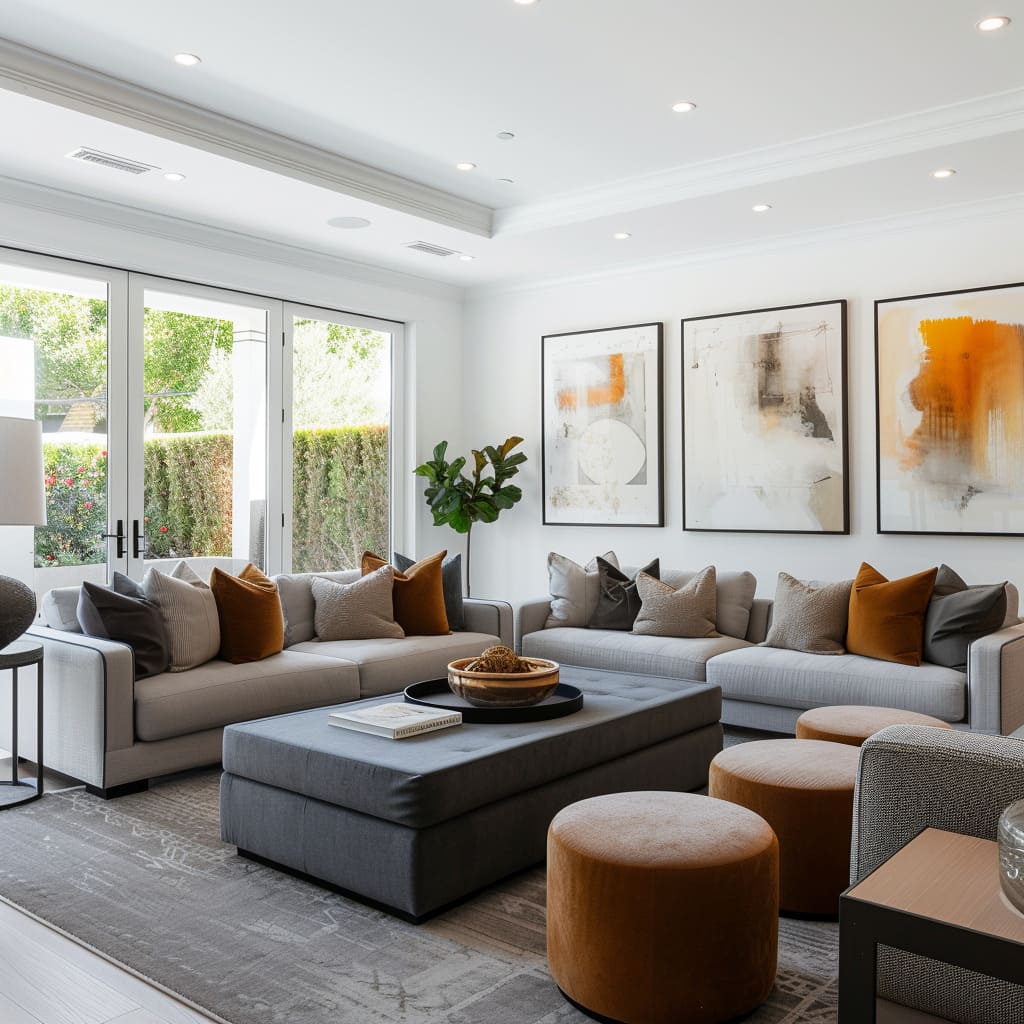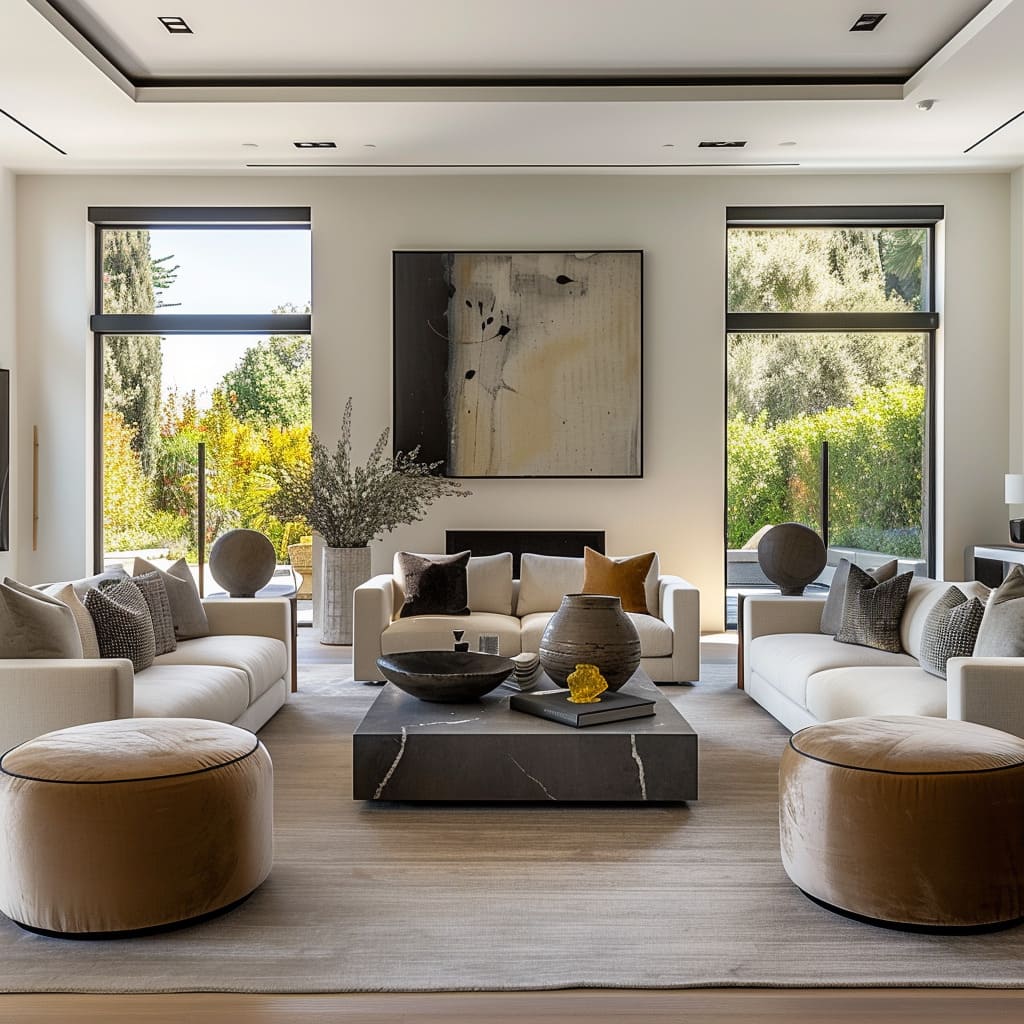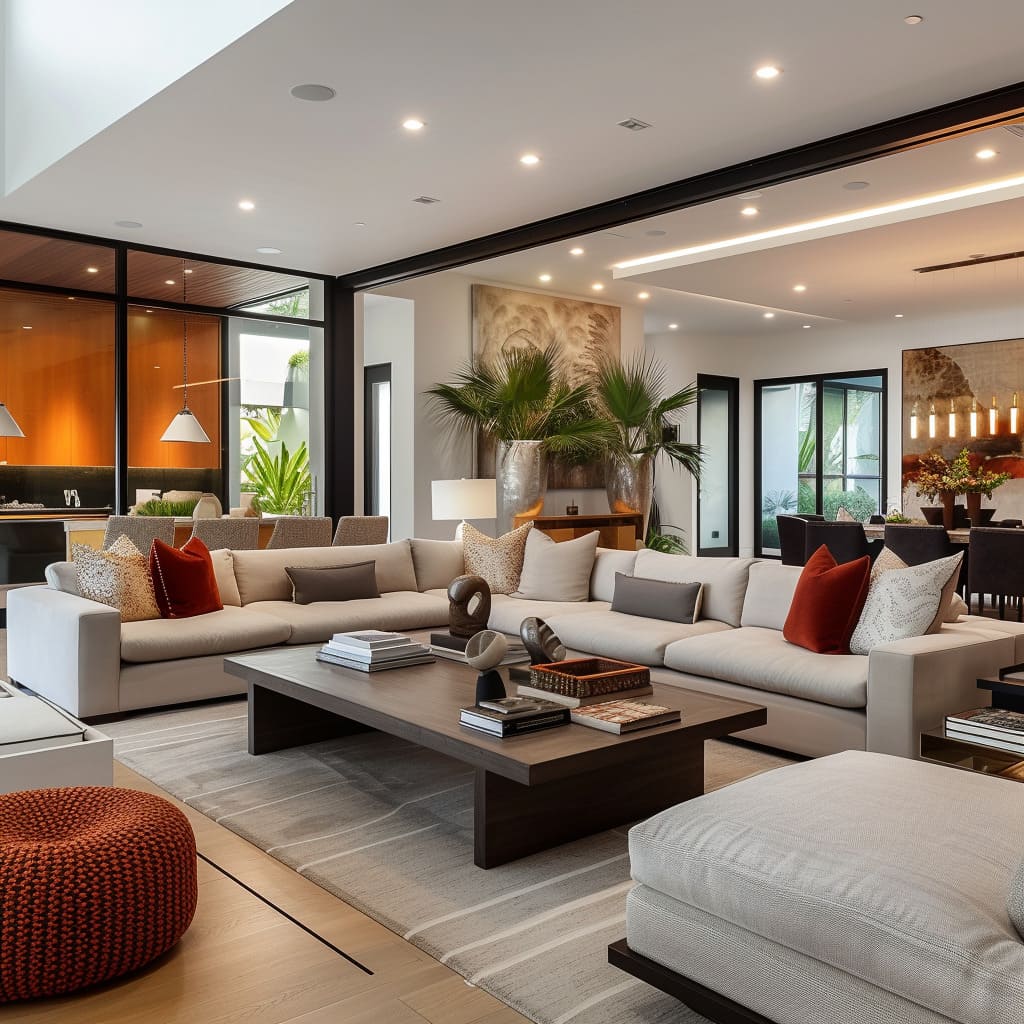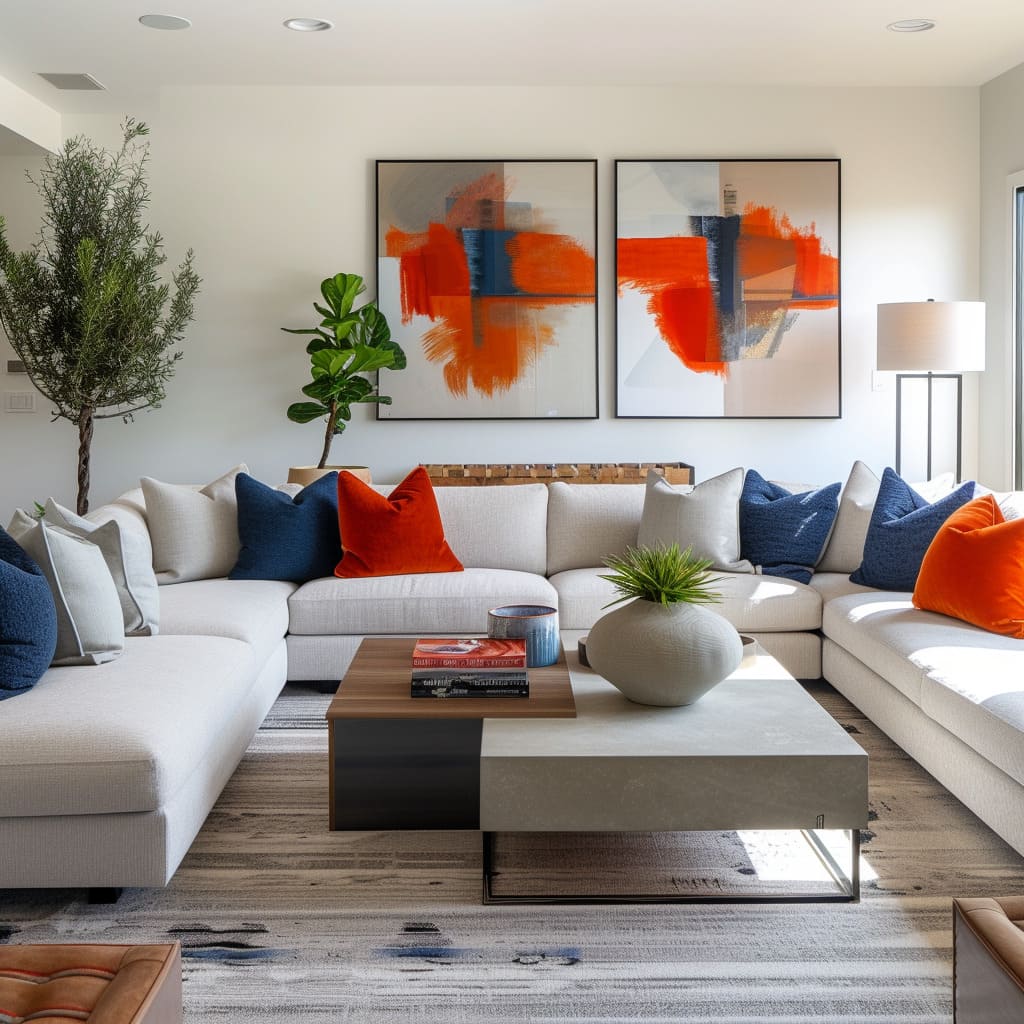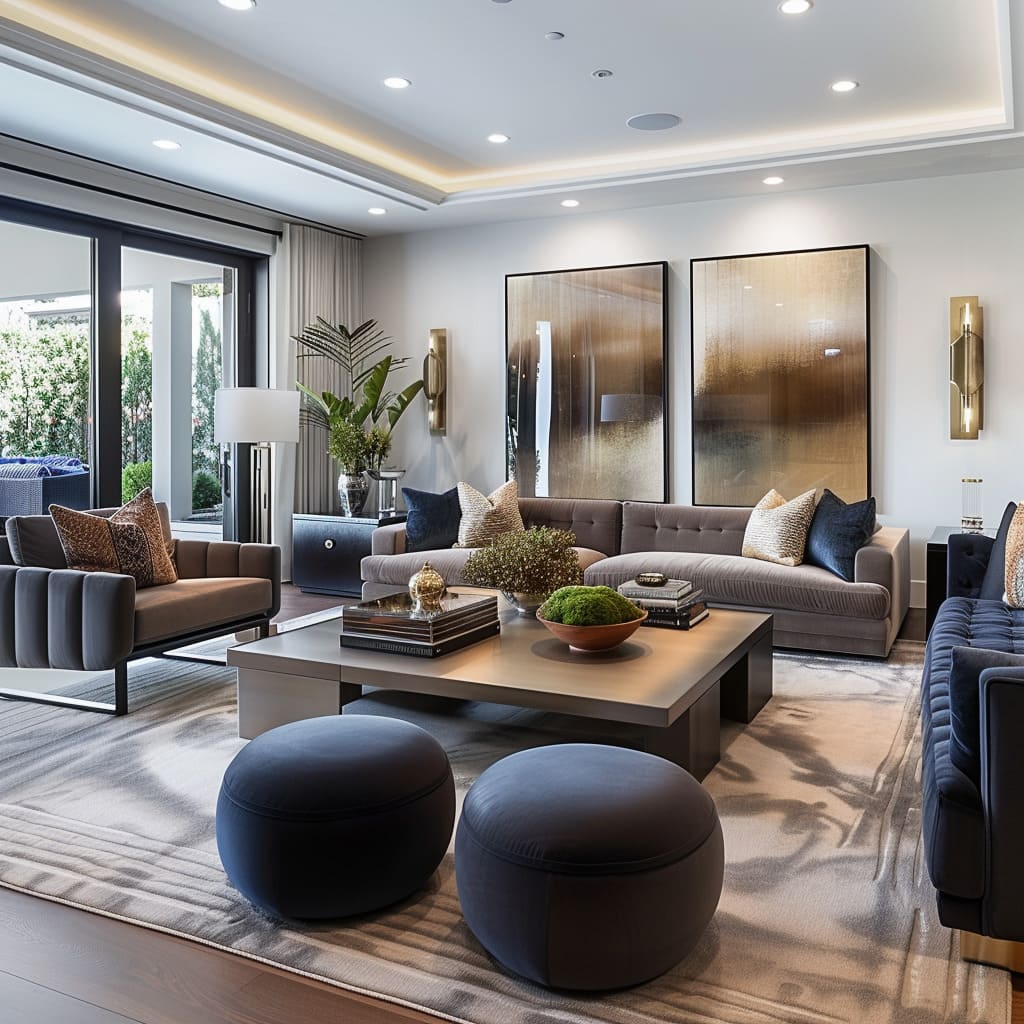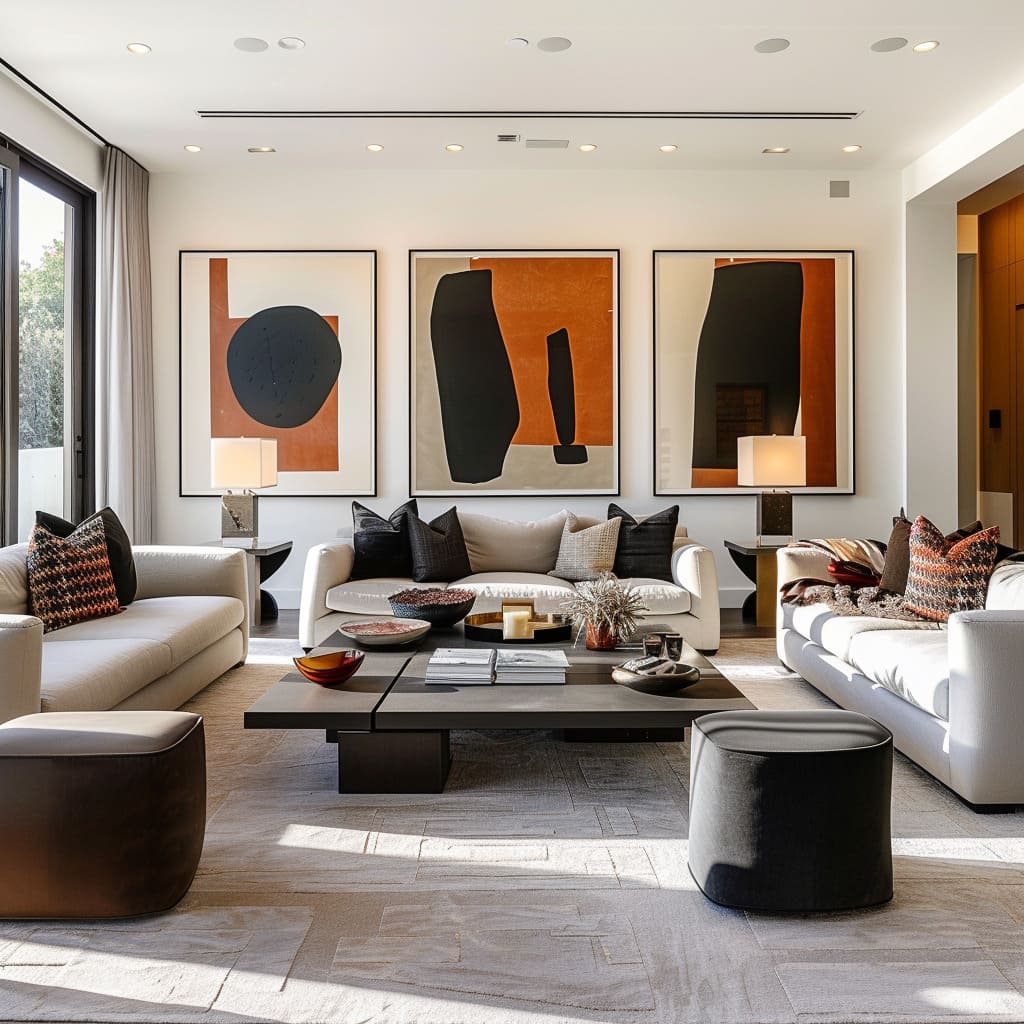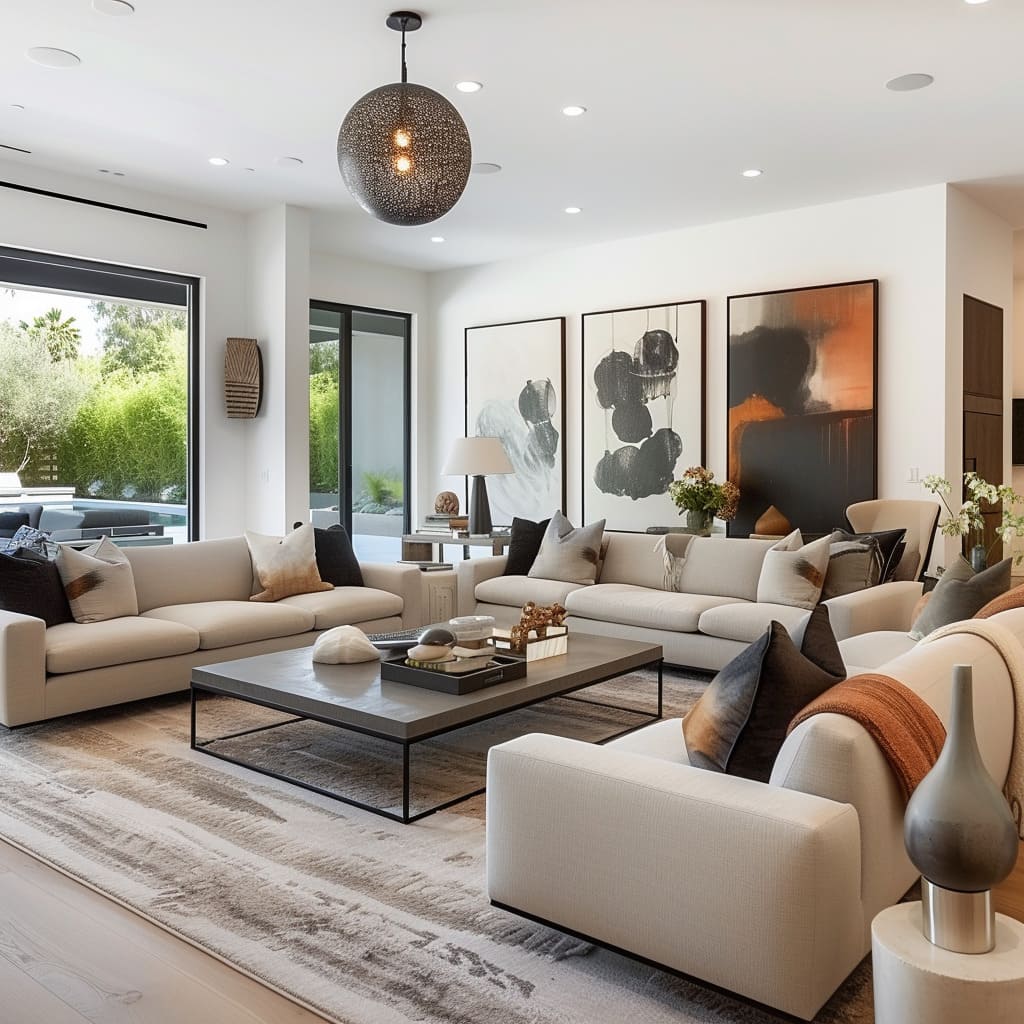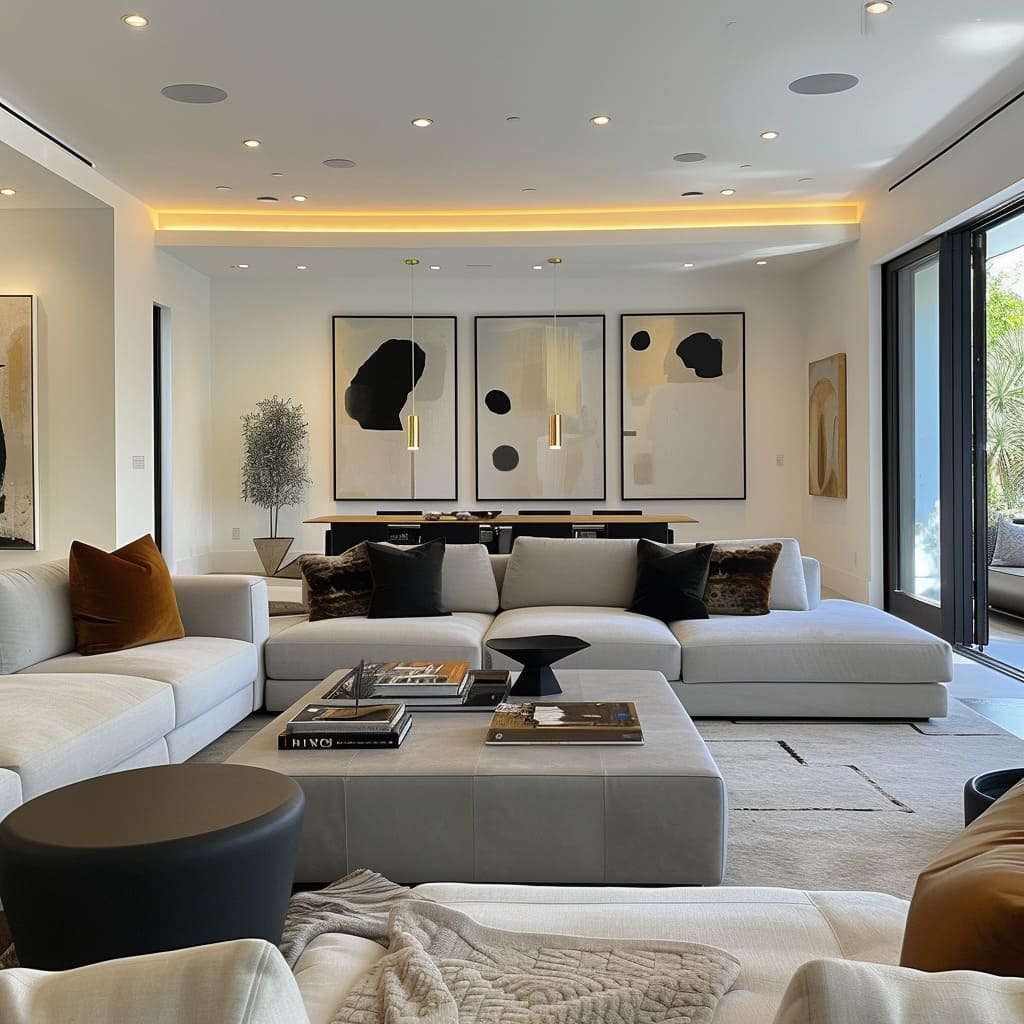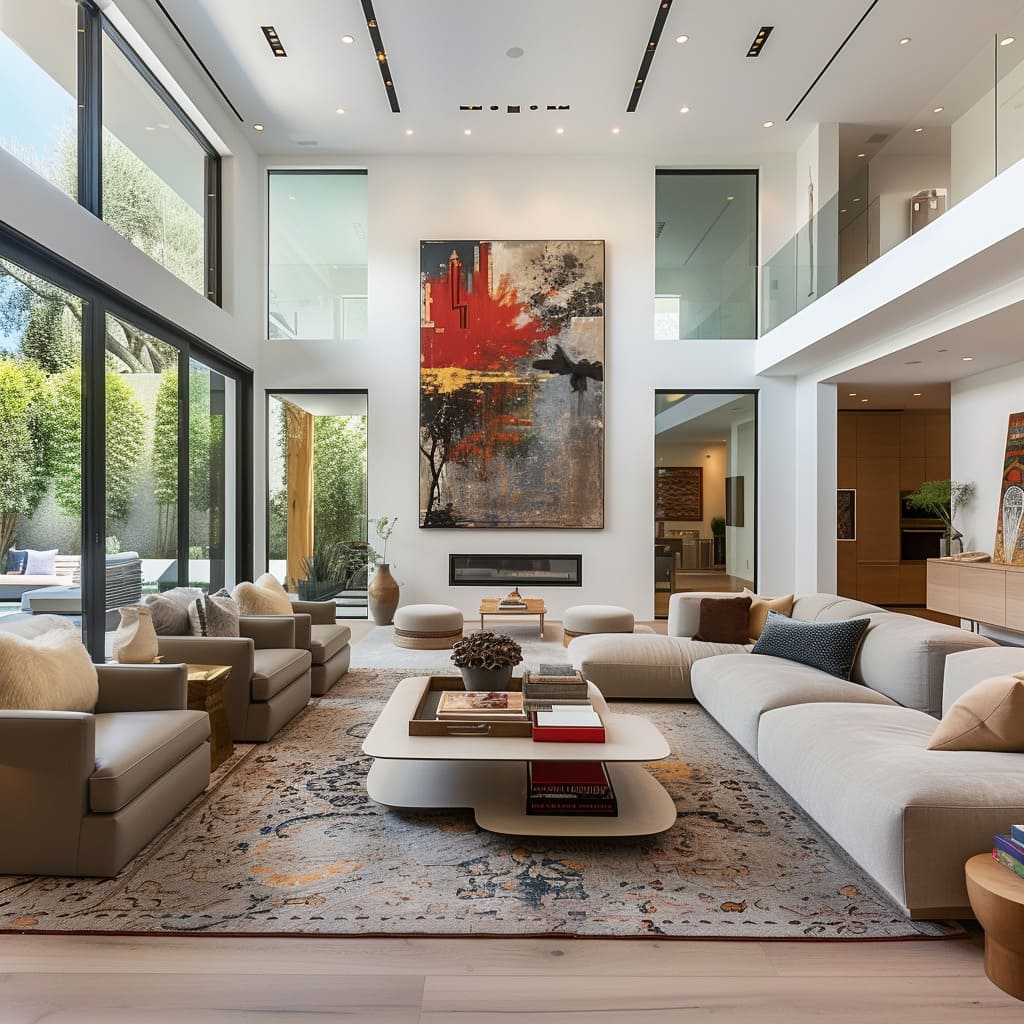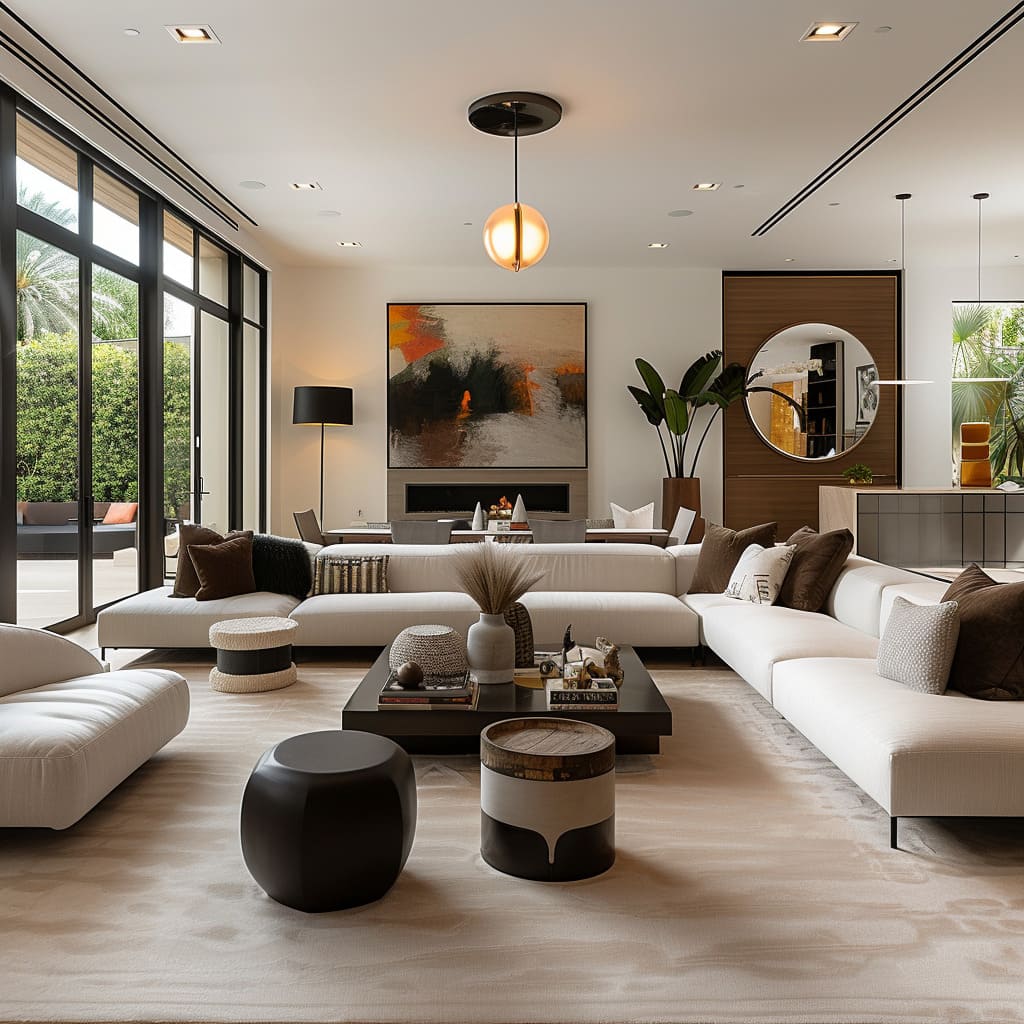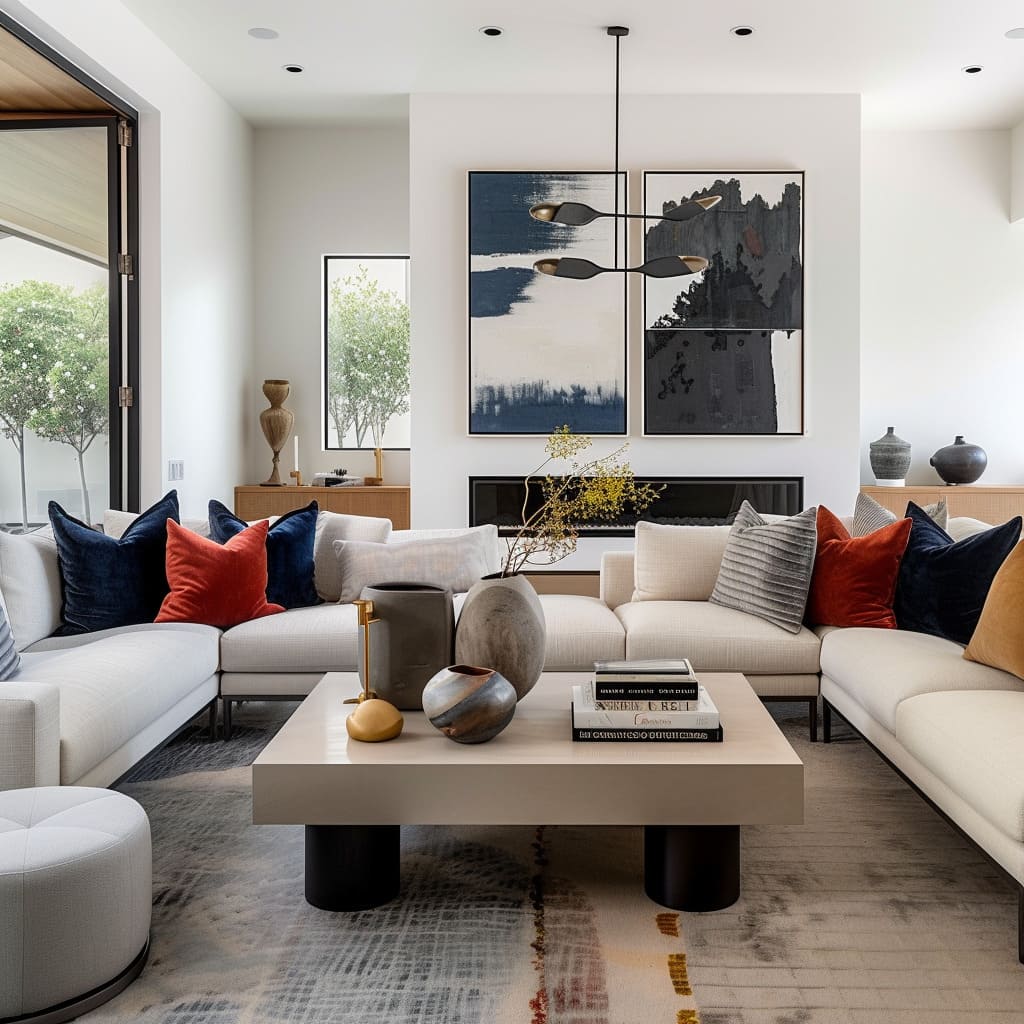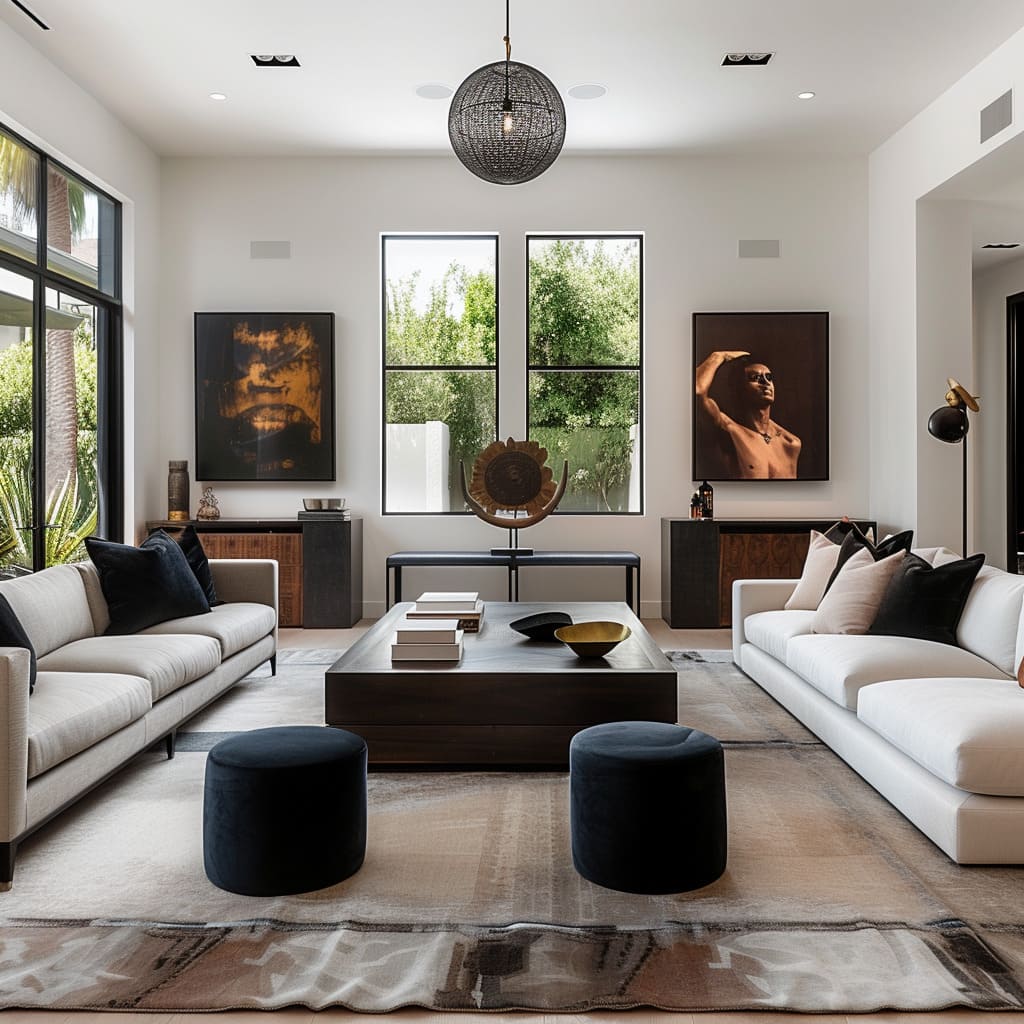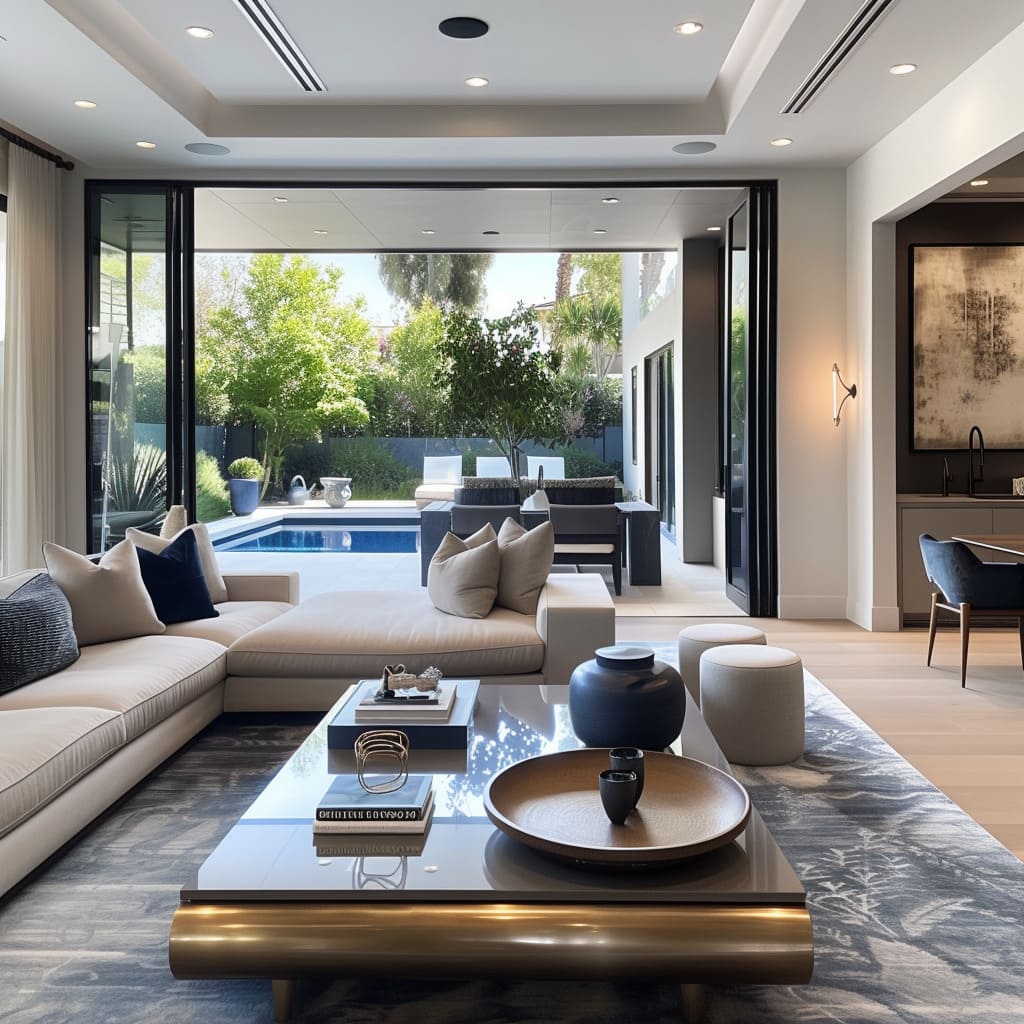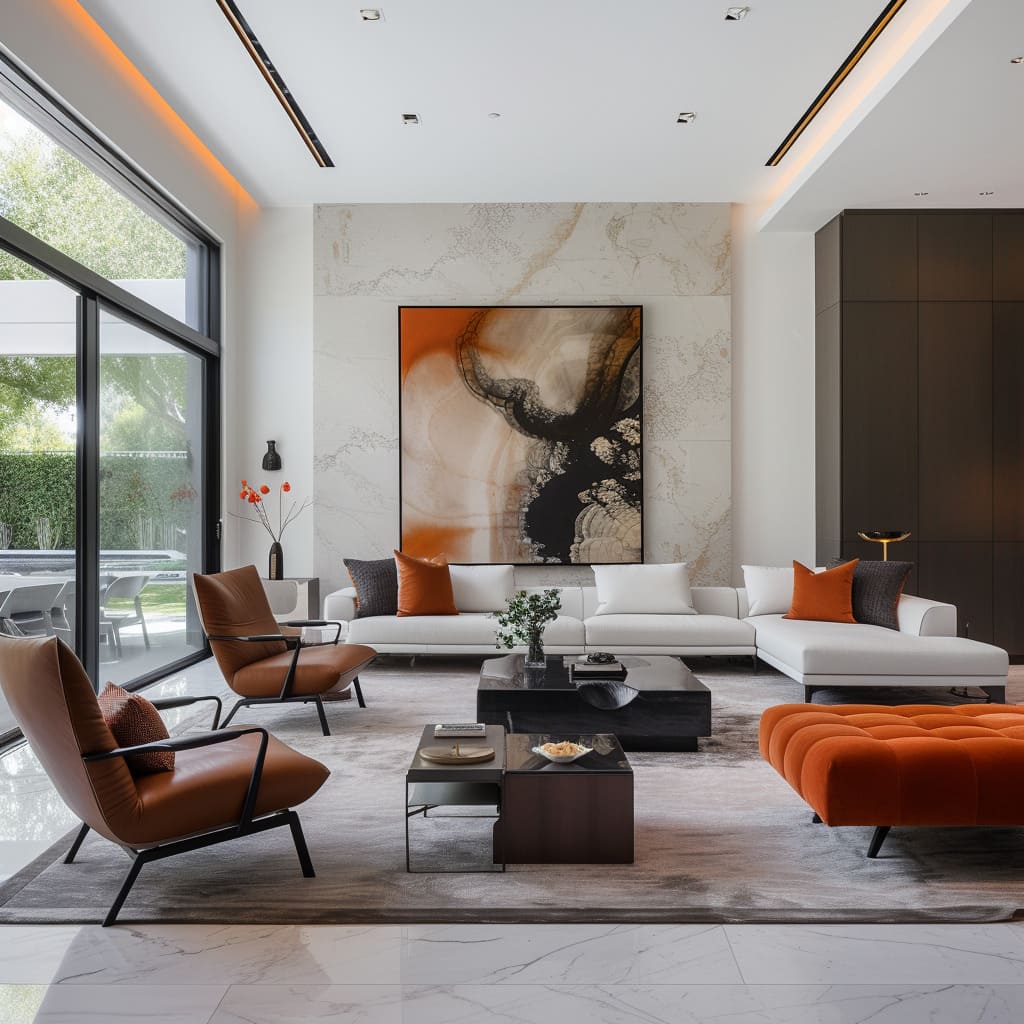In the ever-evolving world of interior design, the concept of open space living rooms stands as a beacon of modern aesthetics and thoughtful functionality. This article delves into the intricacies of contemporary design, where each element within a living space is not just a piece of furniture or decor but a testament to the fusion of art and practicality.
As we embark on this journey through meticulously crafted interiors, we will explore how clean lines, organic elements, and thoughtful use of colors and textures come together to create environments that are not only visually stunning but also inherently comfortable and livable. From modular furniture to the balance of form and function, each aspect of these living rooms is a reflection of the contemporary ethos, where design is not just seen but experienced.
This exploration is not just about appreciating the aesthetic qualities of these spaces but also understanding the underlying principles that make contemporary design both relevant and timeless. We invite you to step into a world where each living room tells a story, a narrative woven through the interplay of light, space, and material, and to discover how contemporary design continues to shape the way we perceive and interact with our living environments.
Expansive Elegance: Open Space Design
The living rooms are exemplary showcases of contemporary design, where the interplay between clean lines and organic elements creates a harmonious and luxurious environment. Embracing a modern aesthetic, the furniture in each room is characterized by sleek, smooth surfaces devoid of ornate detailing, which underlines the clean and understated approach typical of contemporary interior design.
The use of neutral color palettes with occasional splashes of bold colors, like navy or burnt orange, adds depth and visual interest without overwhelming the senses.
The inclusion of lush greenery and natural wood tones introduces an organic touch, seamlessly blending the indoors with the natural world outside. This biophilic design approach not only enriches the aesthetic value but also promotes a sense of tranquility and connection to the environment.
The strategic placement of plants, whether potted or as part of a living green installation, breathes life into the space, while the wood accents, from light oak to rich walnut, add warmth and texture.
Moreover, the arrangement of the furniture and the open-plan layouts invite light to cascade through the rooms, enhancing the sense of openness and space. This is further amplified by the large windows and sliding doors that also serve to erase the boundaries between the interior and exterior, extending the living spaces into the outdoors and allowing residents to fully engage with their surroundings.
The inclusion of art pieces, often abstract and in scale with the space, acts as focal points and conversation starters, while also contributing to the narrative of sophisticated simplicity.
In these interiors, contrast is also a key element. Darker tones, whether in the form of a charcoal rug, a dark wood feature, or a striking piece of art, provide a grounding effect.
These accents create a visual weight that anchors the rooms, drawing the eye and providing a counterbalance to the lighter shades that dominate the spaces. This careful dance between light and dark, warm and cool, soft and hard, underscores the dynamic yet restrained elegance that is at the heart of contemporary design.
Each living room exemplifies an airy openness, with furniture arranged to maximize the perception of space. Low-profile sofas and tables maintain an uncluttered sightline, while thoughtful spacing between pieces ensures ease of movement.
This sense of spaciousness is not just a physical comfort but also a visual and mental one, offering a clutter-free environment that allows the mind to relax and the body to unwind. The open floor plans are punctuated with area rugs that define different zones, while still maintaining an open flow that is both inviting and aesthetically pleasing.
These contemporary living rooms are not just spaces of aesthetic value but are thoughtfully designed for living well, where every element serves a purpose, and beauty is matched by functionality. They are a testament to the philosophy that contemporary design, at its best, is an artful blend of form and function, where the quality of the inhabitants’ experience is as paramount as the visual appeal.
Flexibility in Style: The Rise of Modular Furniture
Modular furniture has emerged as a central feature, symbolizing both style and practicality. The sectional sofas and modular pieces showcased in these living room designs epitomize flexibility, allowing for an effortless adaptation to various spatial configurations and functional demands.
Each composition presents a harmonious blend of aesthetics and utility, with plush, neutral-toned upholstery that serves as a canvas for an array of textured cushions in accents of bold orange, soothing beige, and deep navy. The sectional pieces, ranging from chaises to corner seats, are carefully arranged to create inviting areas that encourage social interaction and relaxation.
Complementing these modular arrangements are thoughtfully selected coffee tables, which anchor the space and provide a stage for decorative objects, from sleek vases to curated books that reflect the homeowner’s personality. These tables often feature a contrast in materials, such as a blend of natural wood and industrial metal finishes, adding depth to the overall design narrative.
Furthermore, the incorporation of area rugs in these living rooms not only adds a layer of comfort underfoot but also defines the seating areas, enhancing the sense of intimacy within the open floor plan.
One cannot overlook the role of lighting and art in these spaces. Recessed ceiling lights and chic pendant fixtures ensure a well-lit ambiance, while the art pieces, ranging from abstract compositions to more figurative works, act as focal points that engage the viewer and inject a dose of individuality into each setting.
The artworks are deliberately chosen for their size and scale, creating a backdrop that complements rather than overwhelms the furniture.
The overall effect of these interior designs is one of understated luxury and fluidity, where each element has been selected not only for its individual merit but also for how it contributes to the collective tableau. This approach to design, with its emphasis on modular furniture, exemplifies the evolving nature of contemporary living where beauty, comfort, and versatility coalesce to create spaces that are both functional and visually compelling.
The result is a testament to the versatility and foresightedness of modern design principles, where living spaces are not just stylish but also adaptable to the changing rhythms of daily life.
Clean Lines
The embodiment of contemporary interior design lies in the celebration of clean lines and smooth surfaces, which is vividly depicted in these living room designs. Each space is a testament to the philosophy that simplicity is the ultimate sophistication.
Furniture pieces with straight lines and sleek forms create a modern, uncluttered look that is both timeless and functional. The minimalist aesthetic is conveyed through low-profile sectional sofas that offer a seamless blend of comfort and style.
These sofas, along with other modular pieces, are not just mere seating options but serve as the backbone of the room’s design, dictating the flow and feel of the space.
The use of a monochromatic palette with subtle variations provides a soothing visual continuity, while bold blues and earthy oranges in the form of throw pillows add a dash of vitality and warmth. The clean lines of the furniture are mirrored in the architectural details, such as the crisp edges of built-in shelving and the precise geometry of window frames, reinforcing the coherent design language throughout these living environments.
Even the accessories and decor, from the table lamps to the planters, adhere to the same design principles, featuring straightforward silhouettes that complement rather than complicate the space.
The coffee and side tables are chosen for their simple geometry and absence of ornamentation, allowing the quality of materials and the integrity of form to stand out. These pieces serve as the perfect platforms for minimalist decor, showcasing a blend of functionality and artistic expression.
The art pieces selected for these spaces further echo the clean-line ethos, with abstract compositions that capture the eye without disturbing the serene ambiance. The strategic placement of these artworks creates points of interest and demonstrates how a minimalist approach can result in a rich and layered aesthetic.
This approach to design is not only about visual appeal but also about fostering an environment that is calming and ordered, an antidote to the chaos of the outside world. It allows the architecture of the space itself to become the focus, with each element playing a role in a larger symphony of straight lines and right angles.
This curated selection of living rooms is a clear reflection of contemporary design’s forward-thinking and adaptive nature, where less is more, and simplicity reigns supreme. Each living room serves as a canvas where life can unfold with elegance, underpinned by the timeless beauty of clean lines and smooth surfaces.
Interior Spaces with Textural Elements
In the realm of interior decoration, the incorporation of textured materials such as linen or bouclé plays a pivotal role in adding depth and visual interest to a room’s furnishings. These materials, known for their distinctive feel and appearance, contribute a layer of sophistication without overpowering the overall aesthetic of the space.
Rugs and textiles, often adorned with subtle patterns, further complement this design ethos. They inject a sense of intrigue and charm, enhancing the room’s character while maintaining its inherent simplicity.
To build upon this foundation, consider the use of throws and cushions in complementary textures. These elements can introduce a sense of comfort and warmth, inviting one to relax in the space.
Wall hangings, particularly those crafted from natural fibers, can also add a tactile dimension to the walls, breaking the monotony with their unique textures and patterns.
Lighting plays a crucial role in showcasing these textured elements. Soft, ambient lighting can accentuate the shadows and highlights of the textured surfaces, creating a dynamic interplay of light and shadow that further enriches the room’s ambiance.
Organic Elements
The incorporation of organic elements in contemporary living room designs is a purposeful nod to the innate human connection to nature, creating an atmosphere that is both serene and grounded. These designs thoughtfully merge the sleekness of modern aesthetics with the warmth and authenticity of natural components.
The presence of plants in varying sizes—from delicate potted greenery to bold, sculptural leafed plants—injects life and vibrancy into these spaces. They stand not only as decorative elements but also as living sculptures that purify the air and connect the indoors with the natural world.
Wooden elements are another cornerstone of these designs, with their natural tones and textures bringing an element of the earth into these sophisticated living spaces. From the smooth, light wood floors that provide a sense of continuity and openness to the richly-hued wooden cabinetry and shelves, these elements introduce an organic touch.
The wood’s natural grain is a subtle reminder of the living world outside, grounding the otherwise contemporary setting with its organic essence.
The furniture choices, too, reflect this blend of modern and organic, with clean lines and plush fabrics presented in earthy tones that harmonize with the wooden accents. The juxtaposition of the soft upholstery against the natural wood creates a dialogue between the crafted and the natural, further emphasized by the strategic use of color.
Warm neutrals, soft beiges, and the occasional splash of orange or blue in the form of cushions and décor pay homage to the natural palette, bringing the calmness of a seaside or the warmth of a sunset into the home.
This approach to design extends beyond aesthetics, touching on a deeper level of sensory experience where the tactile qualities of wood, the lushness of plant life, and the overall visual harmony create a living space that is not just seen but felt. These living rooms demonstrate that contemporary design can be both chic and soulful, providing a tranquil retreat that celebrates the beauty of the natural world.
The result is a series of spaces that offer a sanctuary from the fast pace of modern life, where one can unwind in an environment that feels both refined and intimately connected to nature.
Dramatic Flair: Contrast Accents
In the realm of contemporary interior design, the calculated use of contrast through dark colors and materials is a sophisticated strategy to add visual weight and anchor the living spaces. The living rooms depicted here serve as an exemplar of how contrast can be effectively harnessed to enhance the design narrative.
Darker hues and materials are employed not as the main characters but as strategic accents that enhance the depth and dimension of the rooms. For instance, the rich, dark tones of accent pillows, select furniture pieces, and art frames offer a stark yet harmonious juxtaposition against the lighter, neutral backgrounds of the sofas and walls.
These accents are thoughtfully distributed to draw the eye and create focal points that guide one’s gaze around the room, from a statement piece of art to the inviting plushness of a darkly upholstered armchair. The strategic placement of dark colors aids in defining different areas within an open-plan space, distinguishing lounging areas from dining or workspaces without the need for physical partitions.
This subtle demarcation preserves the airiness of the design while still providing a sense of organization and intent.
The incorporation of contrasting elements extends to the materials as well, with matte and gloss finishes interplaying to capture and reflect light differently throughout the day, adding a dynamic quality to the living rooms. For example, the sheen of a polished black coffee table stands out against the matte finish of a soft rug, adding a tactile dimension to the visual contrast.
This interplay is not just about aesthetics but also about creating a sensory experience that is rich and engaging.
The contrast also serves a practical purpose by highlighting the architectural features of the space. Recessed lighting and structural columns painted or accented in darker tones punctuate the space, drawing attention to the craftsmanship and design thought that has gone into every detail of these contemporary homes.
It is this balance of light and dark, of boldness and subtlety, that characterizes these living rooms, making them exemplars of contemporary design that is both grounded and elevated by the artful use of contrast.
Balance of Form and Function
The living room interiors presented here exemplify the refined aesthetics of contemporary design, where the synergy of form and functionality creates spaces that are both visually stunning and eminently livable. Each room, while unique in its composition, speaks a common language of clean lines and uncluttered surfaces, hallmarked by a thoughtful selection of furnishings that balance comfort with style.
In these spaces, the furniture is arranged to not only facilitate ease of movement but to also promote interaction, be it social gatherings or individual relaxation. Sofas and chairs in neutral tones of cream, beige, and gray provide a versatile foundation, complemented by tactile fabrics that invite touch.
Accent pillows in varying shades add a pop of color and texture, enhancing the inviting nature of each room.
The strategic placement of art and decorative objects acts as visual anchors, creating focal points that draw the eye. The artwork, whether abstract or figurative, is carefully curated to resonate with the room’s palette and mood, sometimes offering a stark contrast that punctuates the space with an arresting visual statement.
Attention to lighting, both natural and artificial, plays a critical role in these designs. Large windows and glass doors flood the rooms with daylight, augmenting the sense of openness.
Recessed and statement lighting fixtures are employed not just for their luminous output but as sculptural elements that contribute to the overall composition.
The integration of organic elements is a recurring theme. Plants of various sizes introduce a touch of nature indoors, reinforcing the connection to the outdoors and contributing to the rooms’ serene ambiance.
Natural wood tones in flooring and cabinetry add warmth and texture, further enhancing the organic feel.
Functionality is addressed through the thoughtful positioning of functional elements like coffee tables and entertainment units, which offer convenience without disrupting the aesthetic flow. The open-plan layouts are a testament to a modern lifestyle, offering flexibility and a sense of expansiveness.
In conclusion, these living rooms reflect a contemporary approach to interior design that celebrates simplicity, emphasizes comfort, and values the harmonious blend of beauty and utility.
In summary, the contemporary living rooms we have journeyed through are much more than mere showcases of modern design; they are the embodiment of a design philosophy that prioritizes harmony between aesthetics and practicality. These spaces are meticulously crafted to serve not only as areas of relaxation and social interaction but also as personal sanctuaries that reflect the personalities and lifestyles of their inhabitants.
The careful selection of modular furniture, the strategic use of contrast and texture, and the integration of organic elements all contribute to creating environments that are both inviting and inspiring. The emphasis on clean lines and open spaces speaks to a deeper understanding of contemporary life, where the home is a respite from the bustling world outside.
These living rooms stand as a testament to the idea that true beauty in design lies in creating spaces that are both functional and emotionally resonant. As we conclude this exploration, it becomes evident that contemporary interior design is not just about following trends but about creating timeless spaces that resonate with the essence of modern living – spaces that are not just built but thoughtfully composed to enrich our daily experiences.


